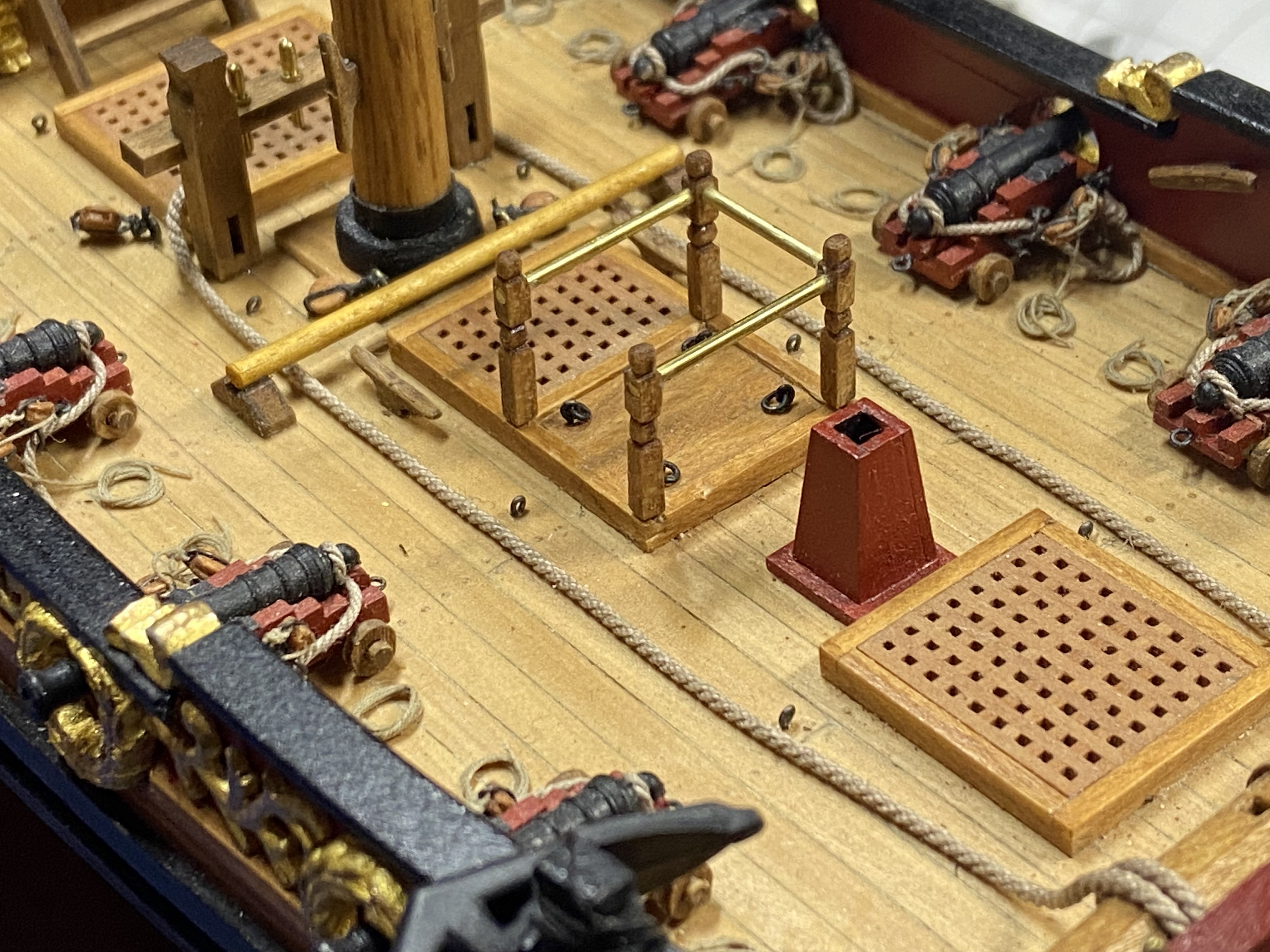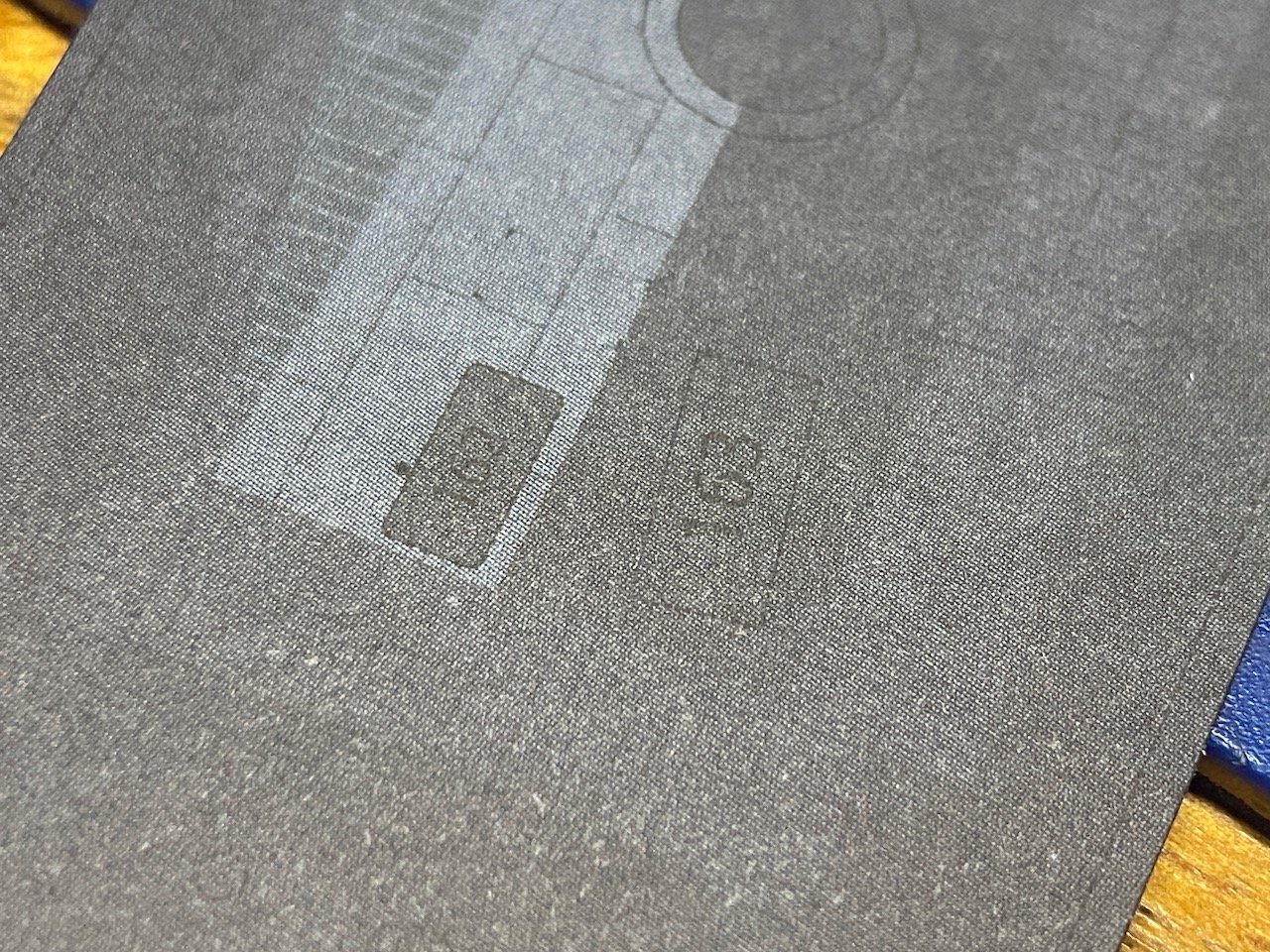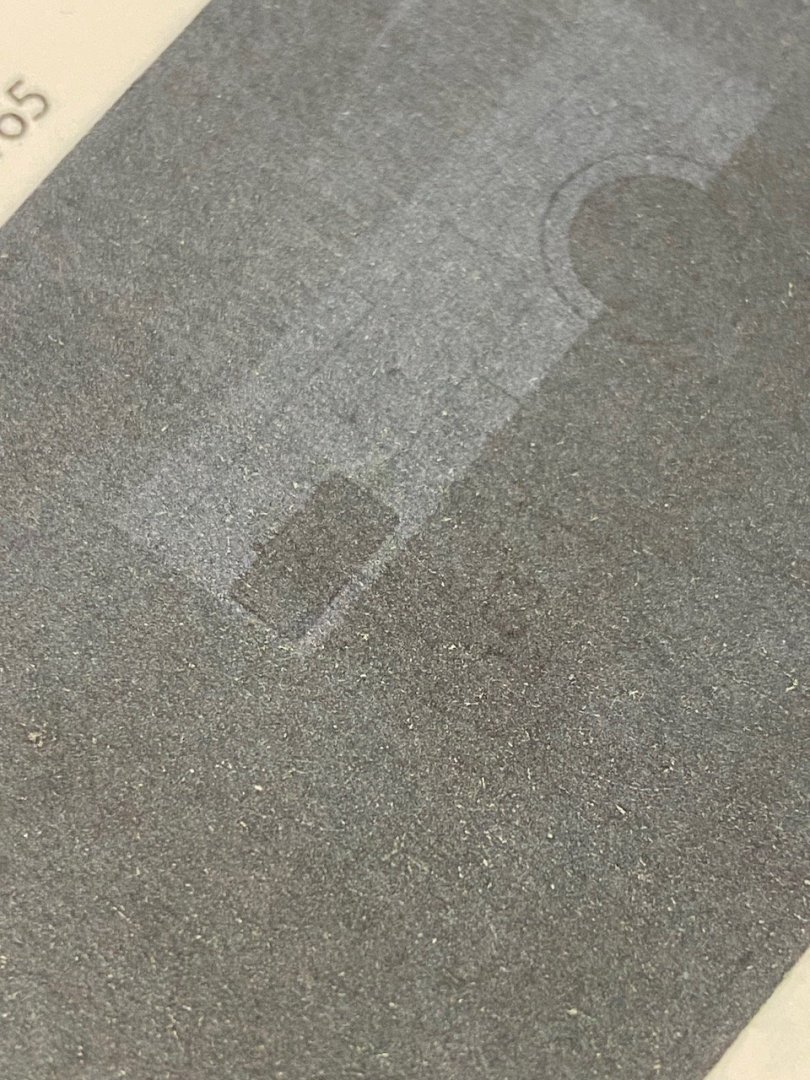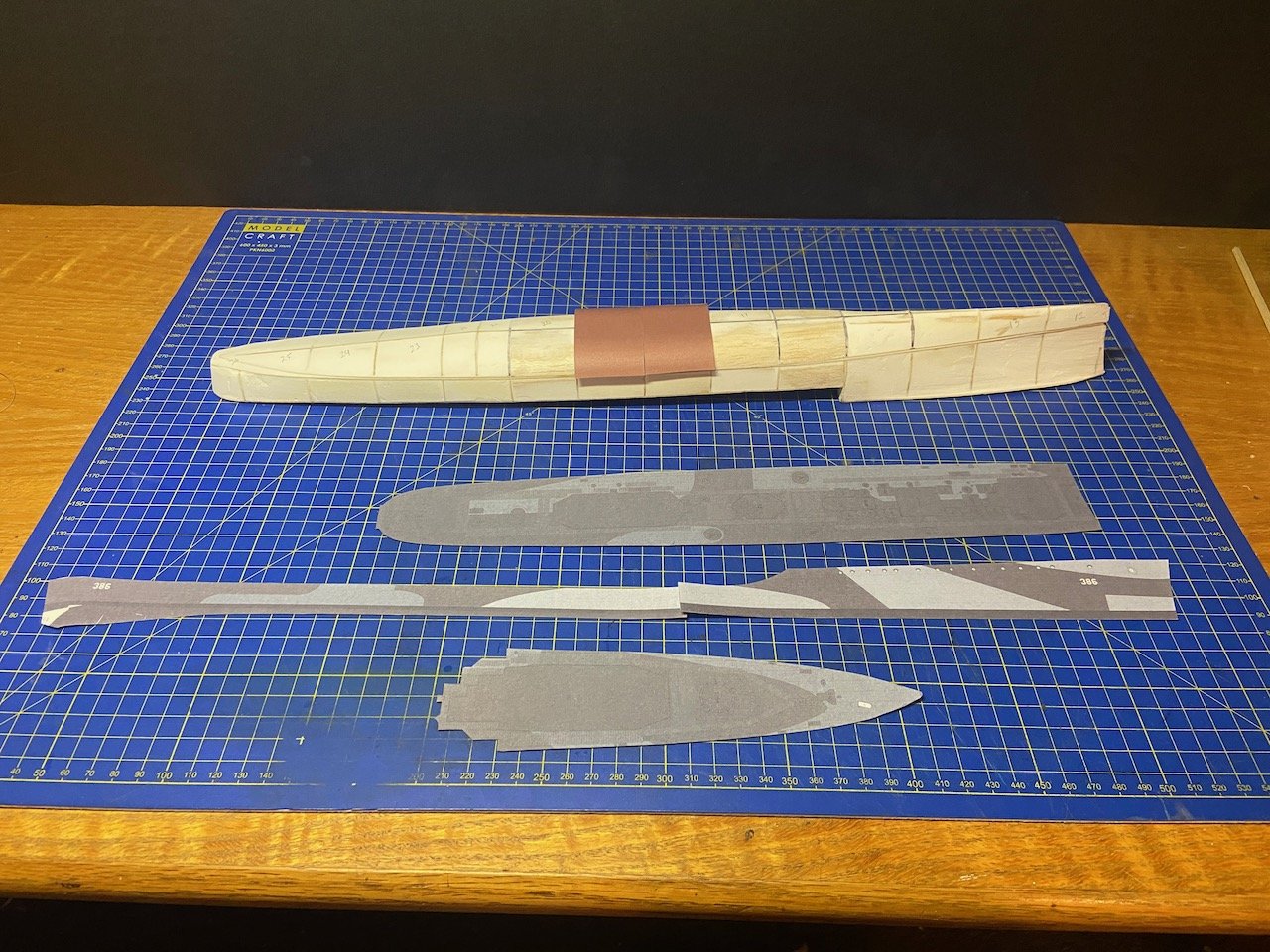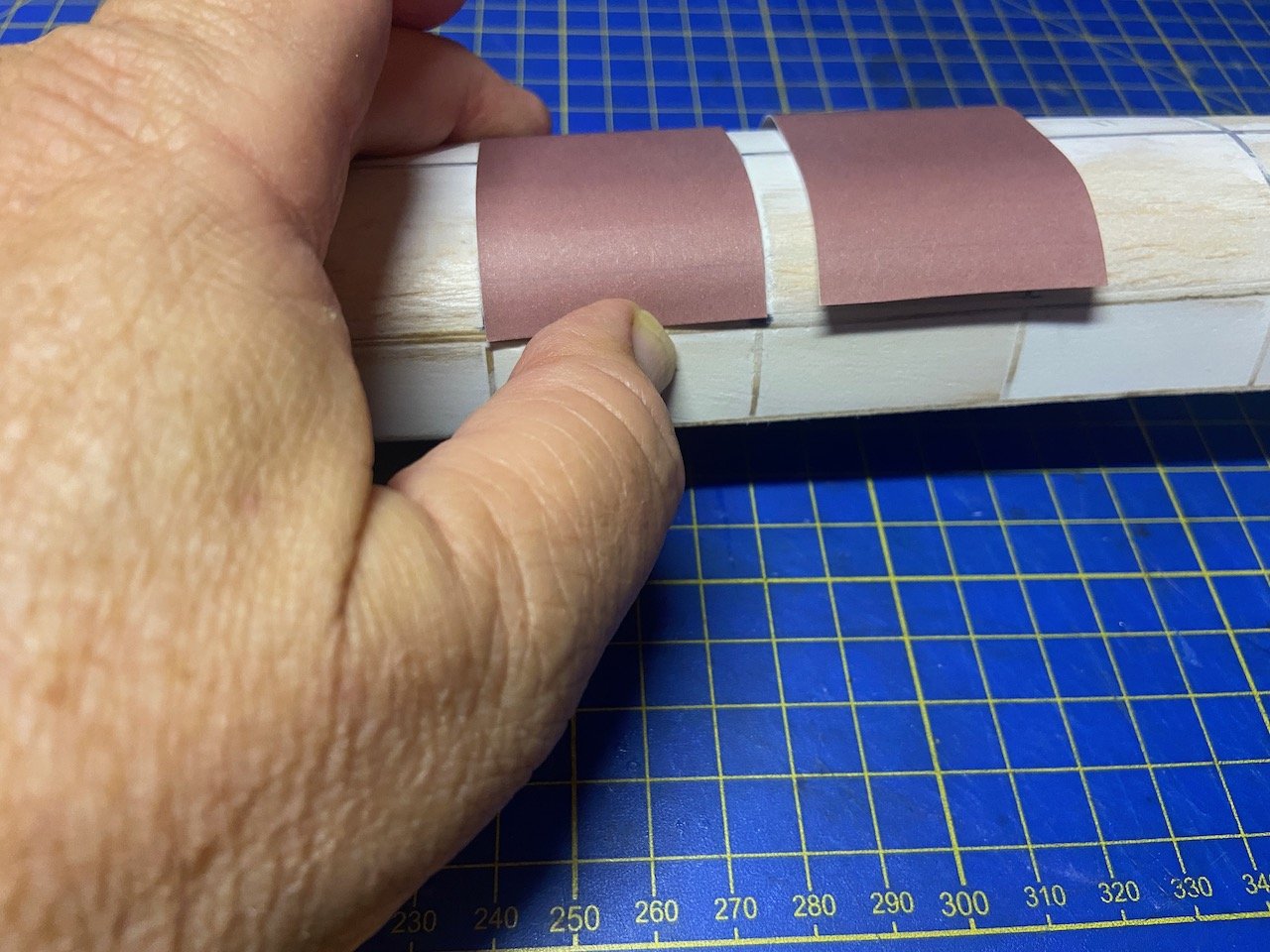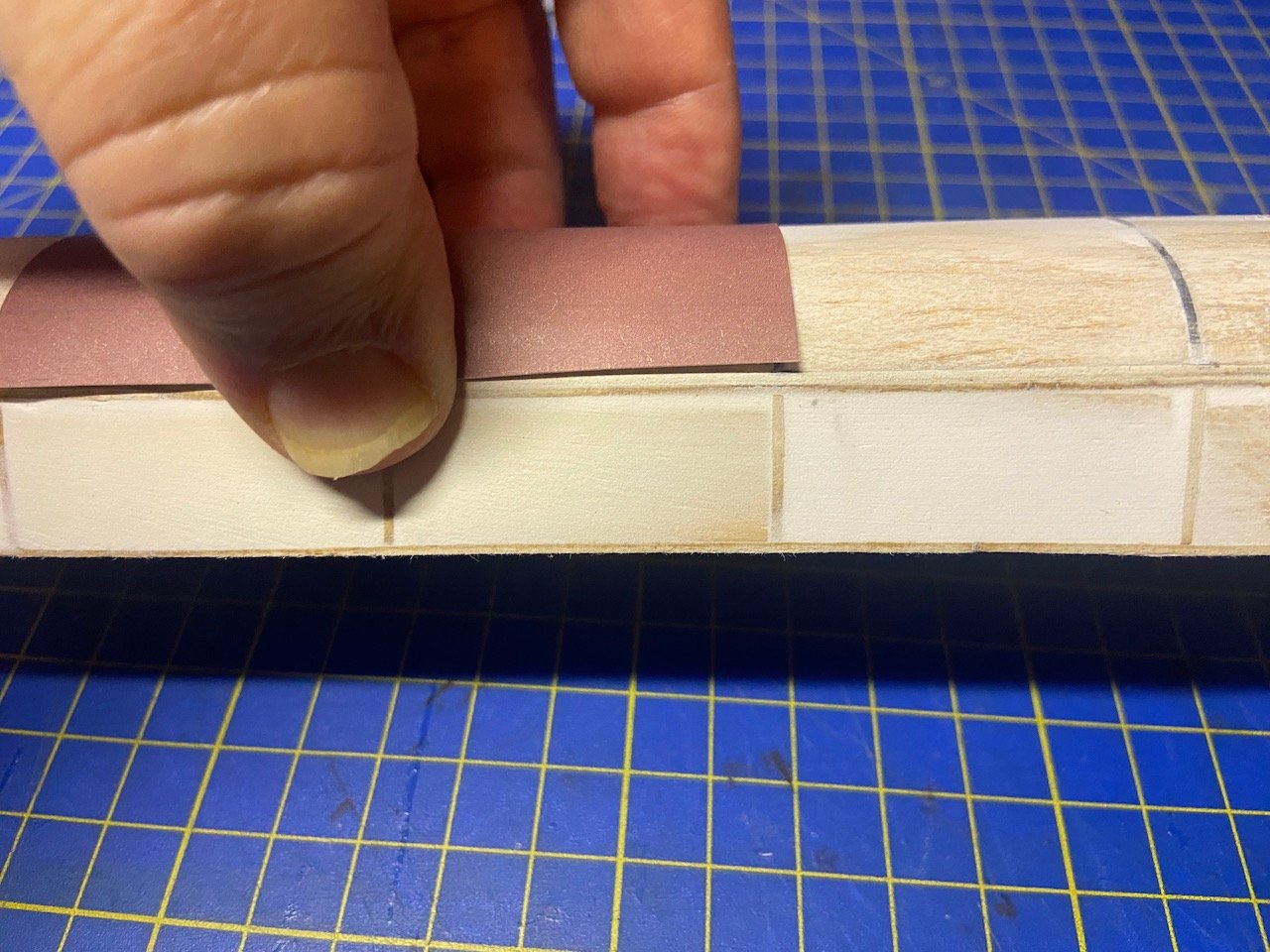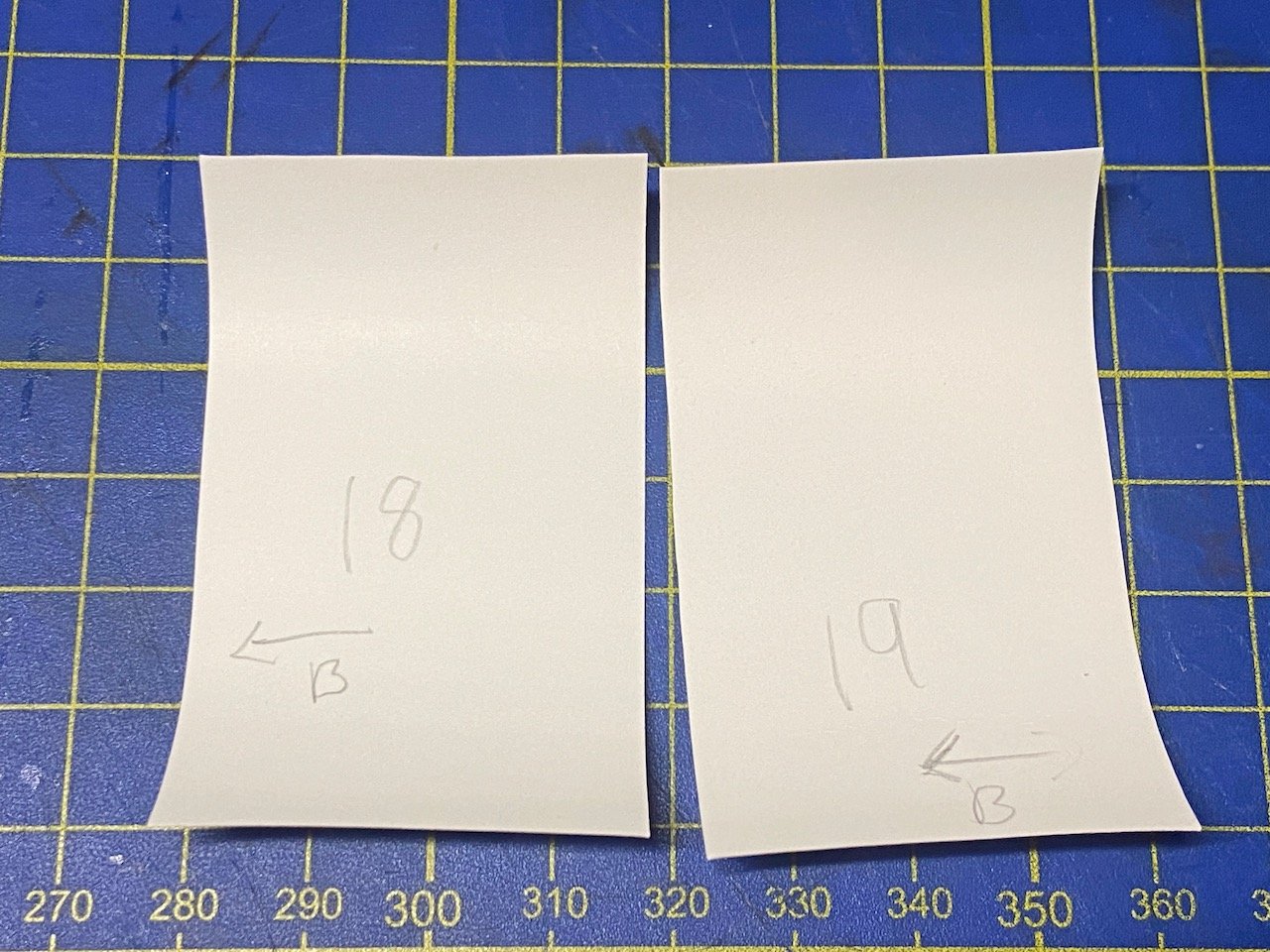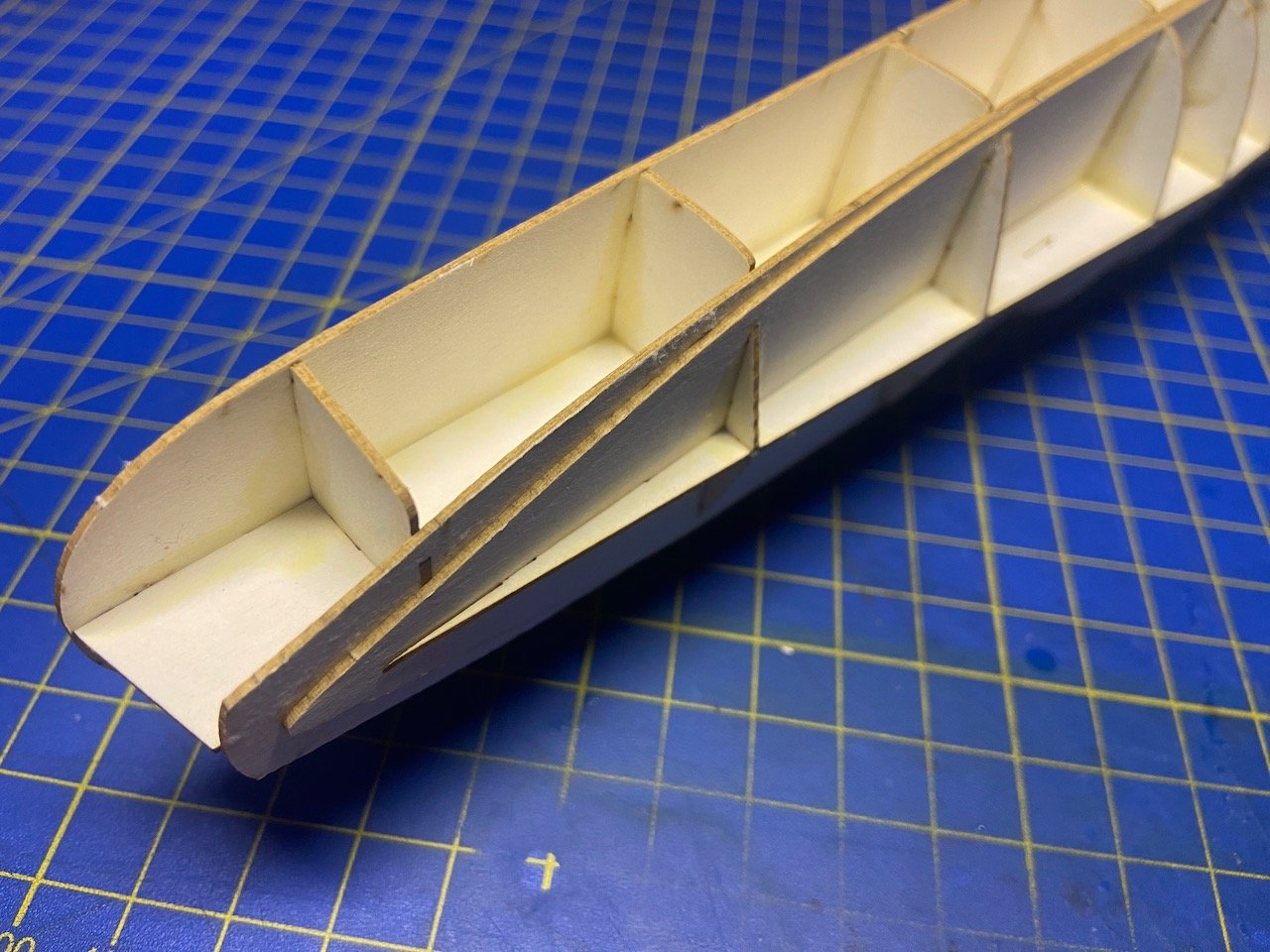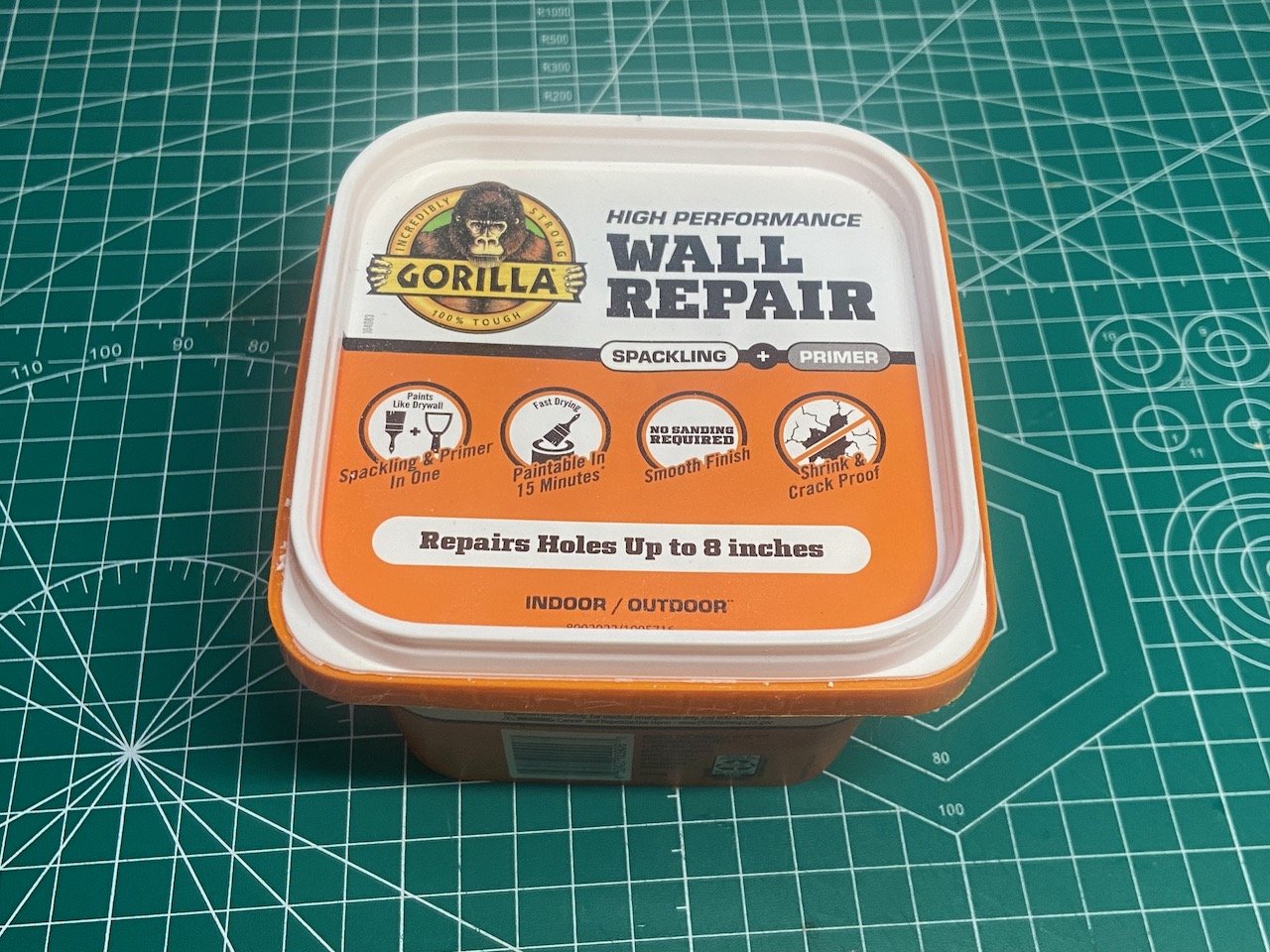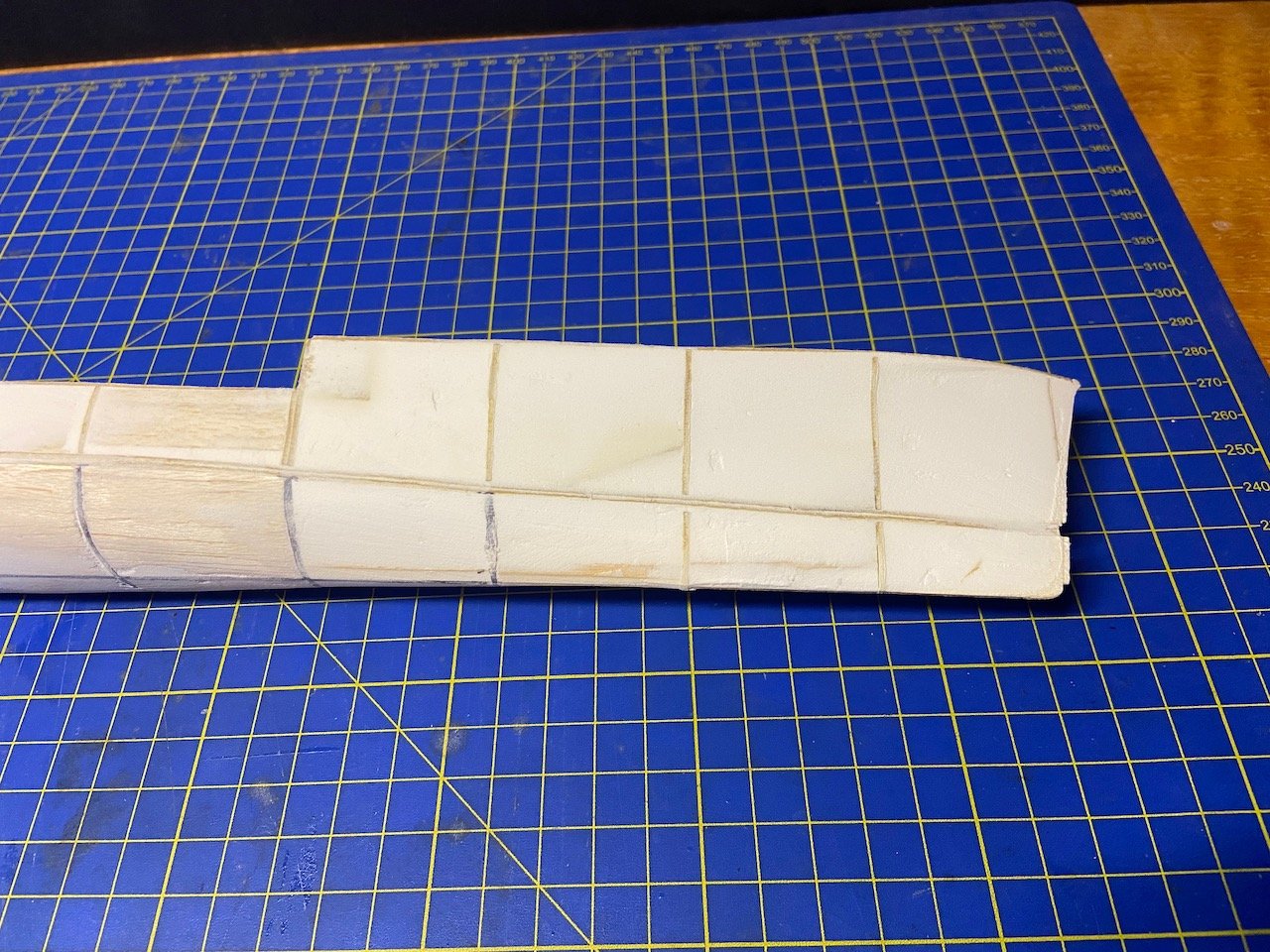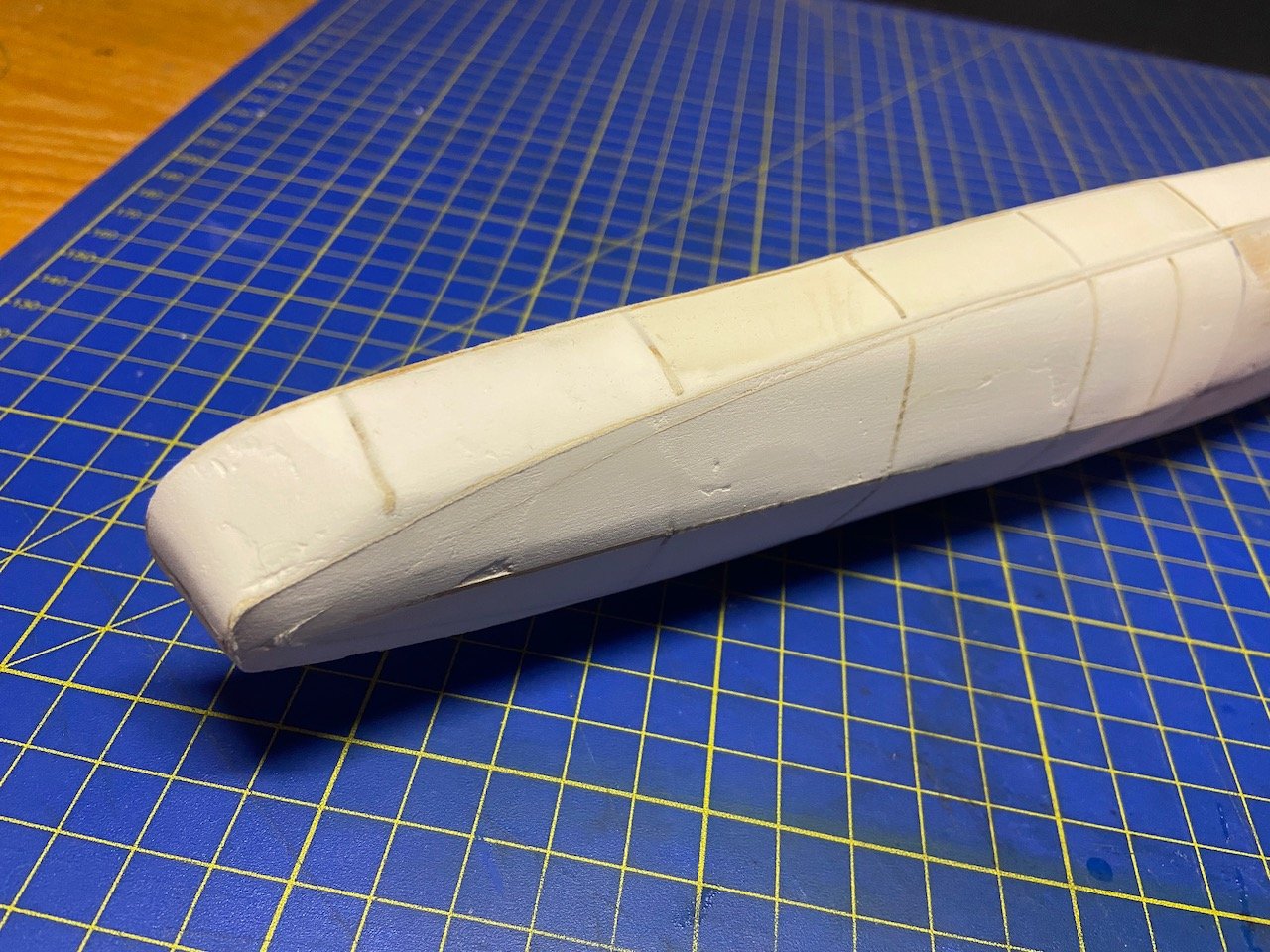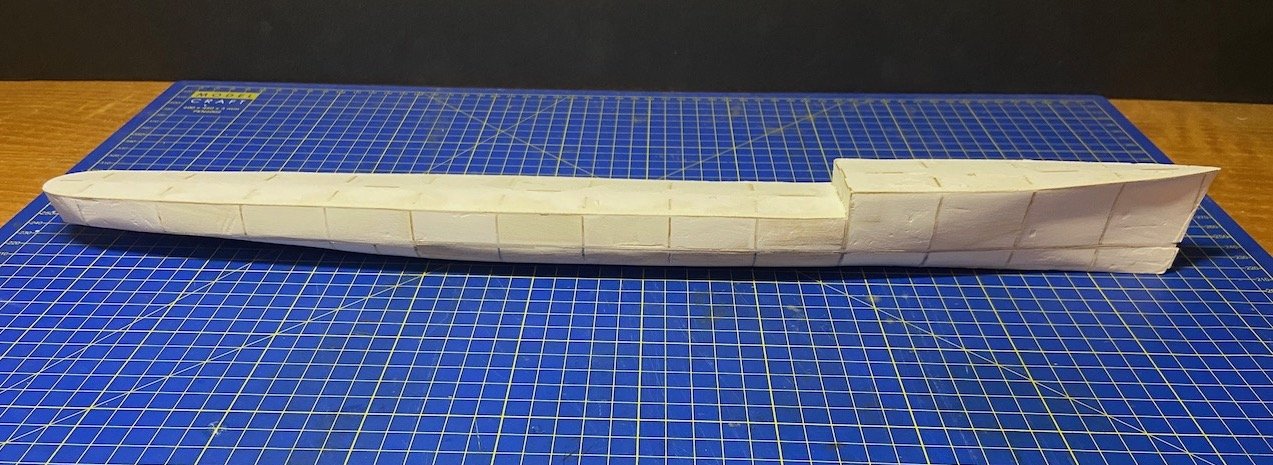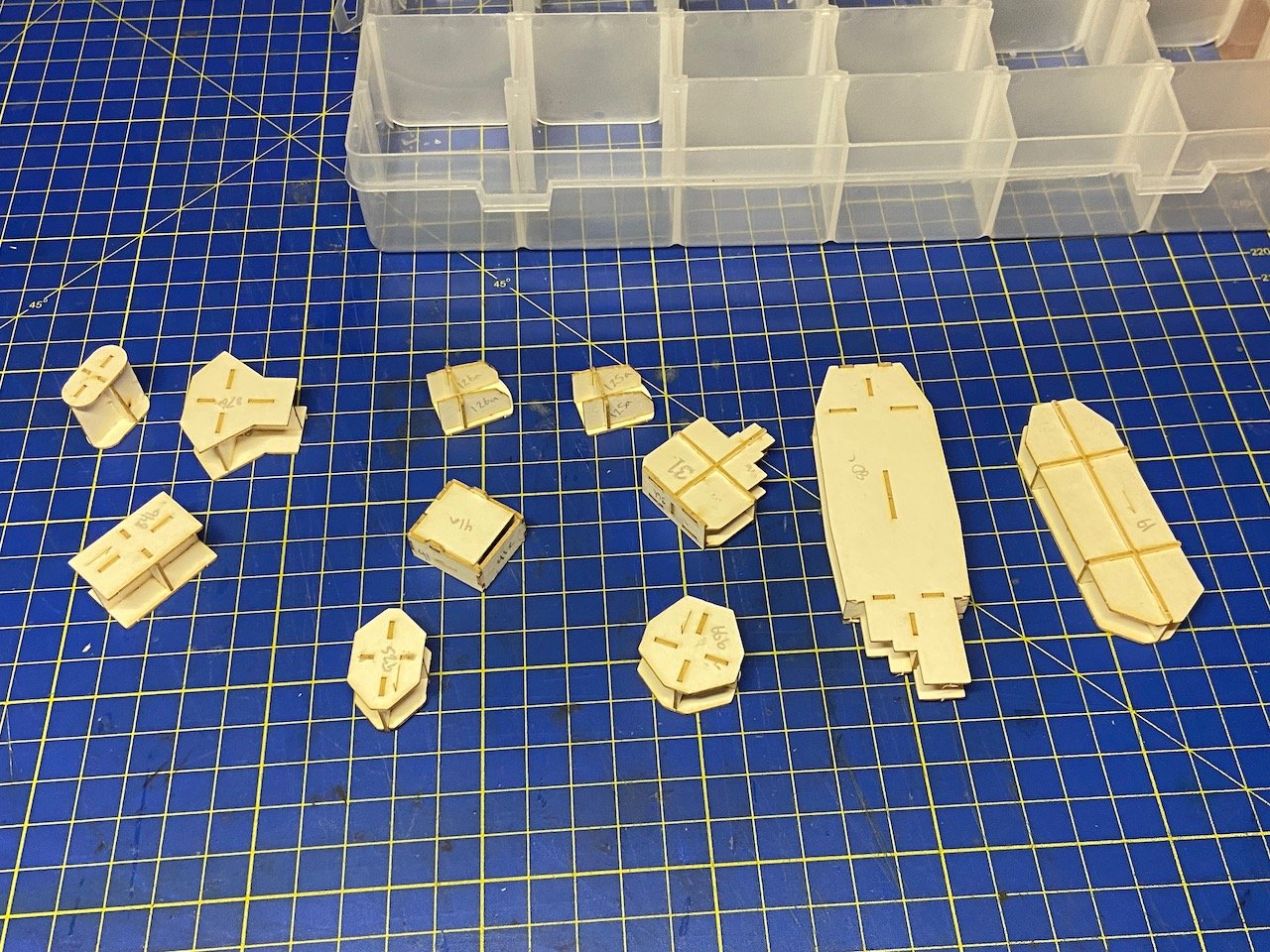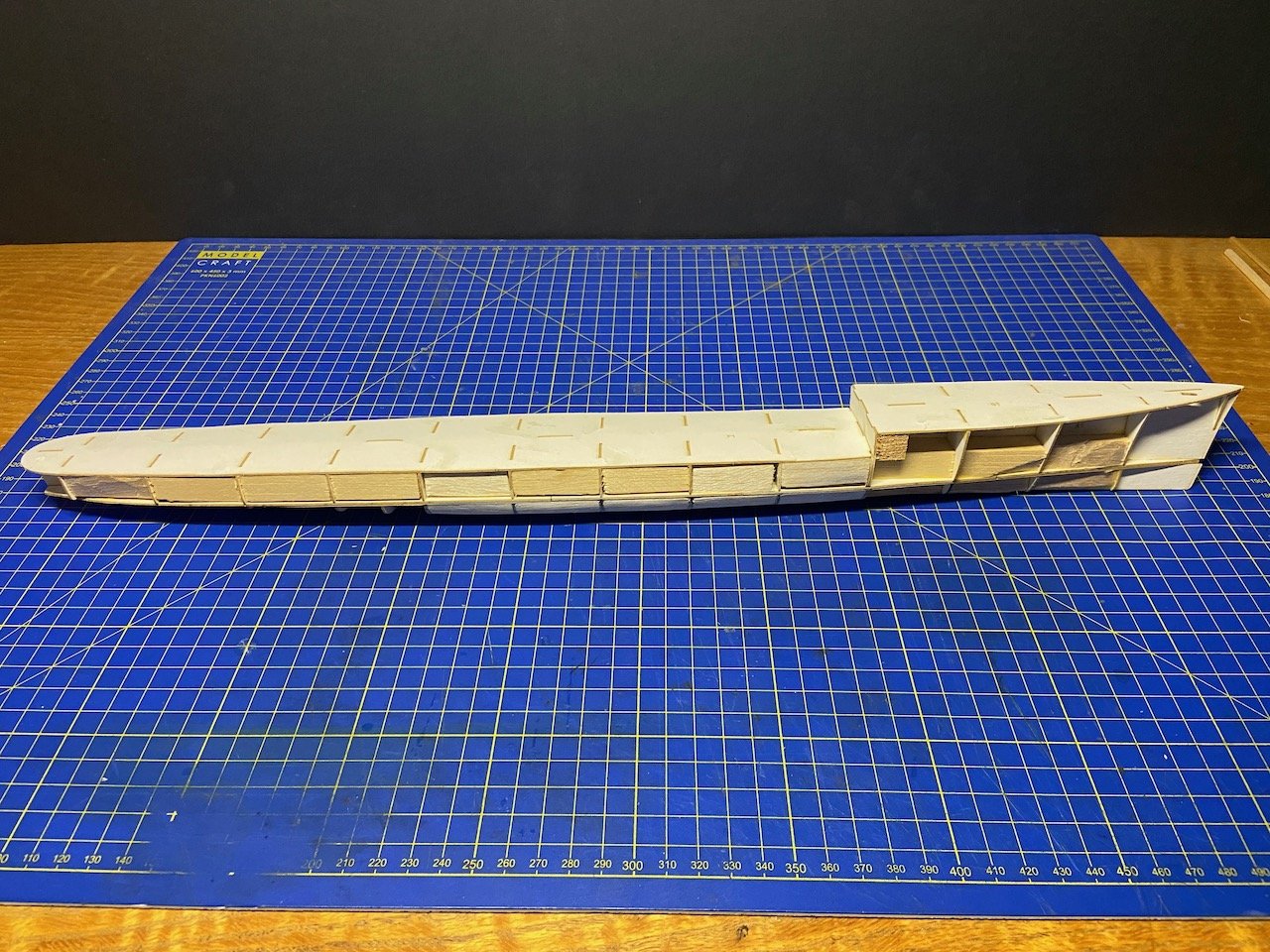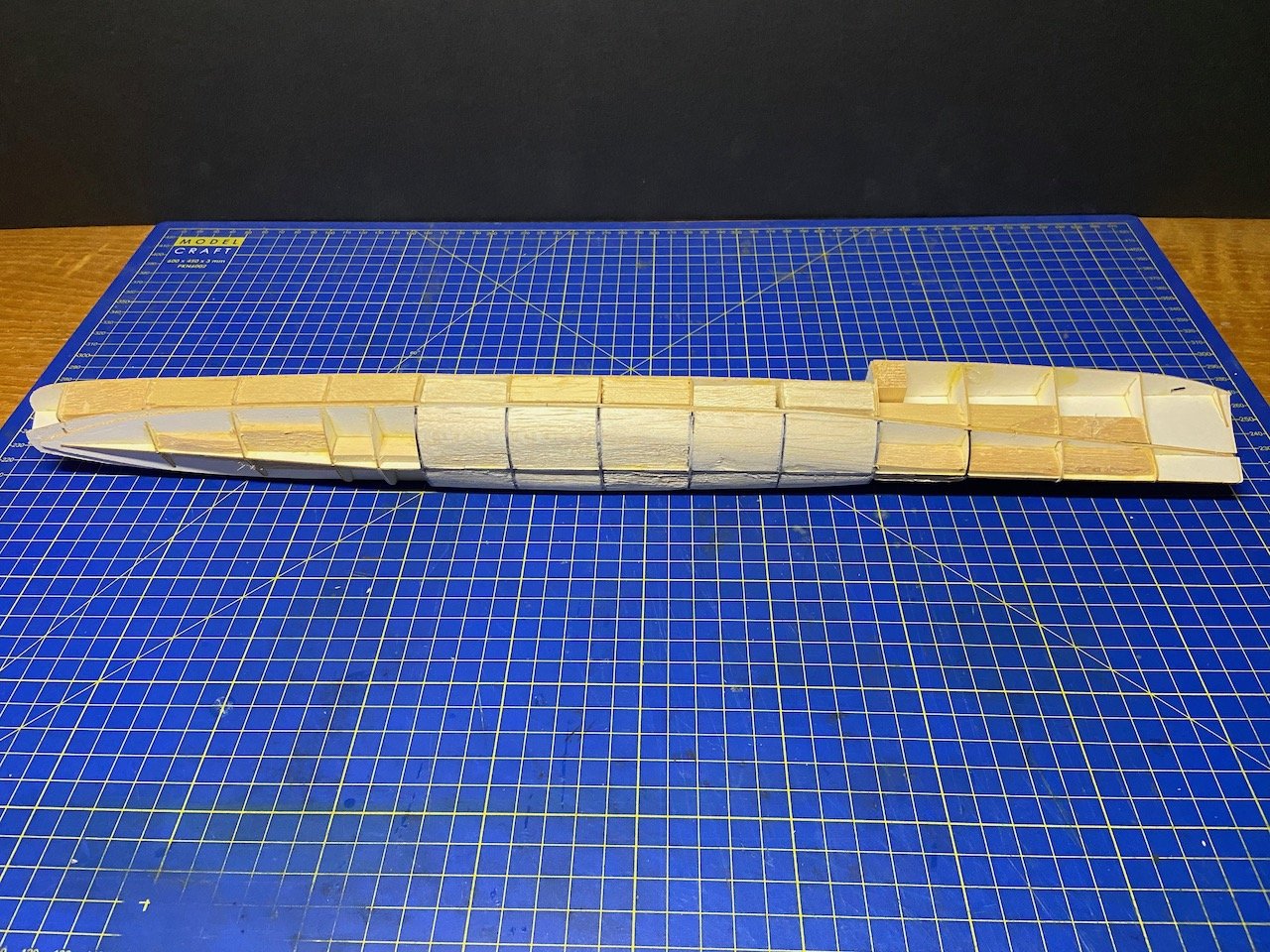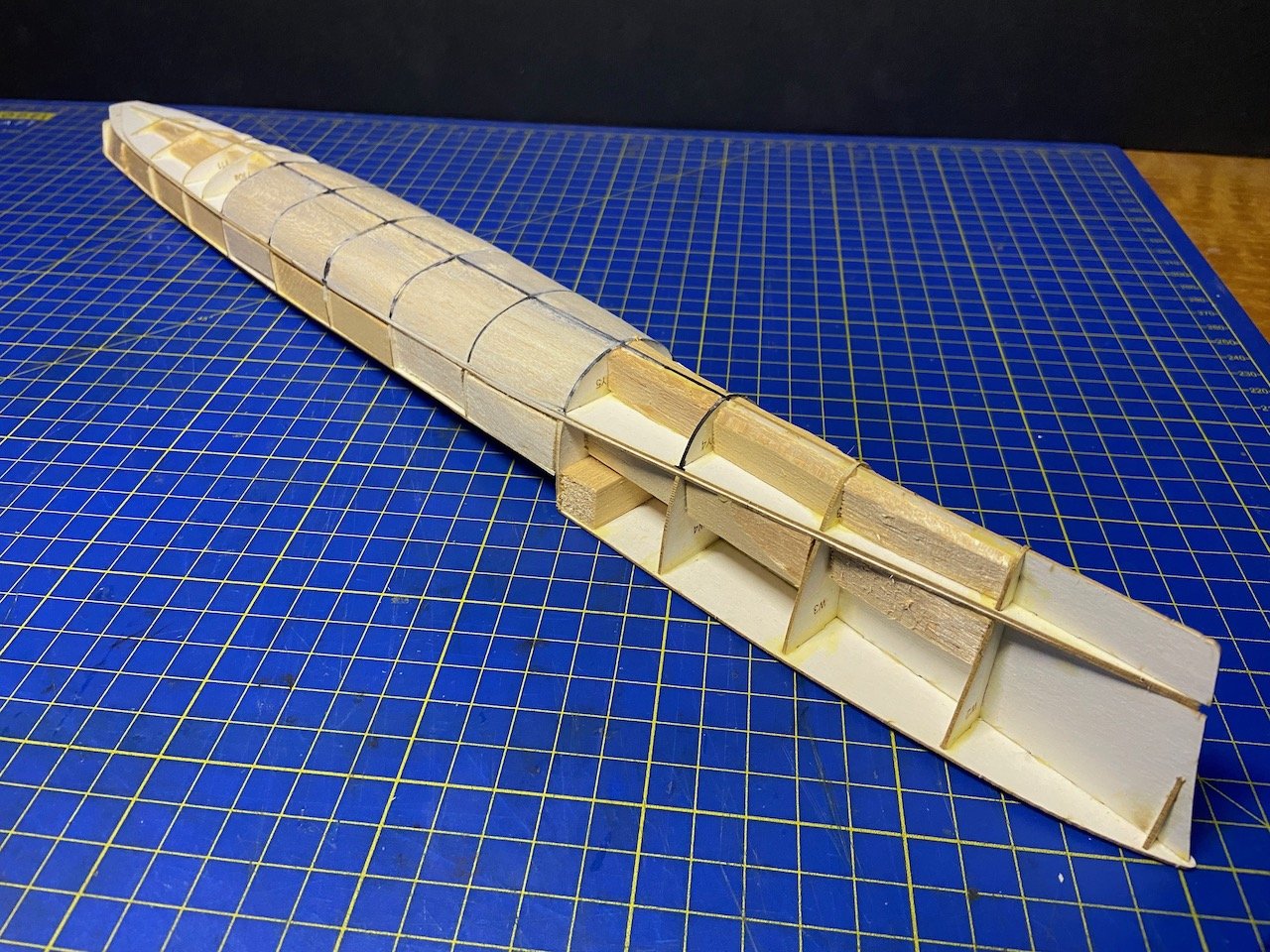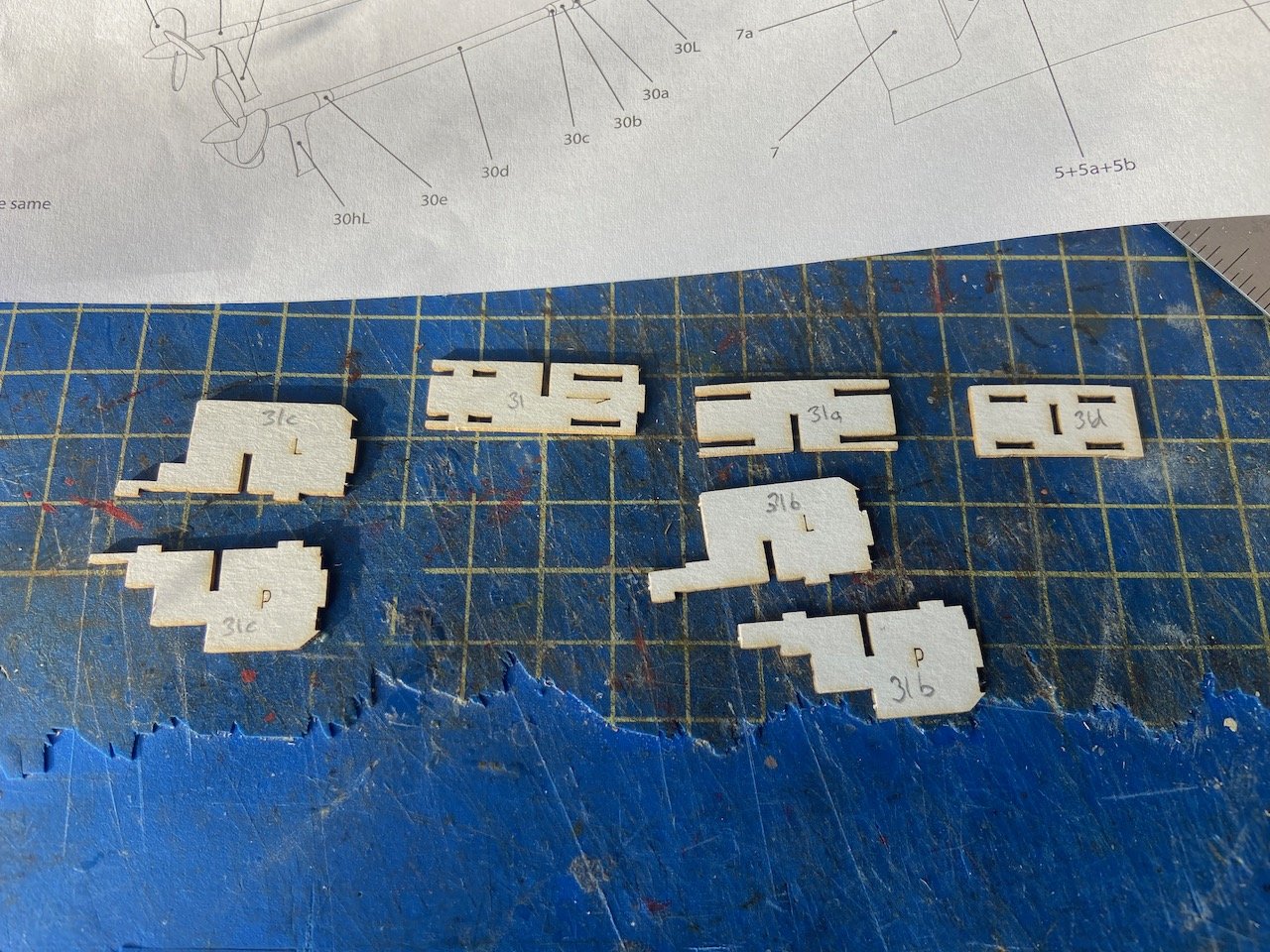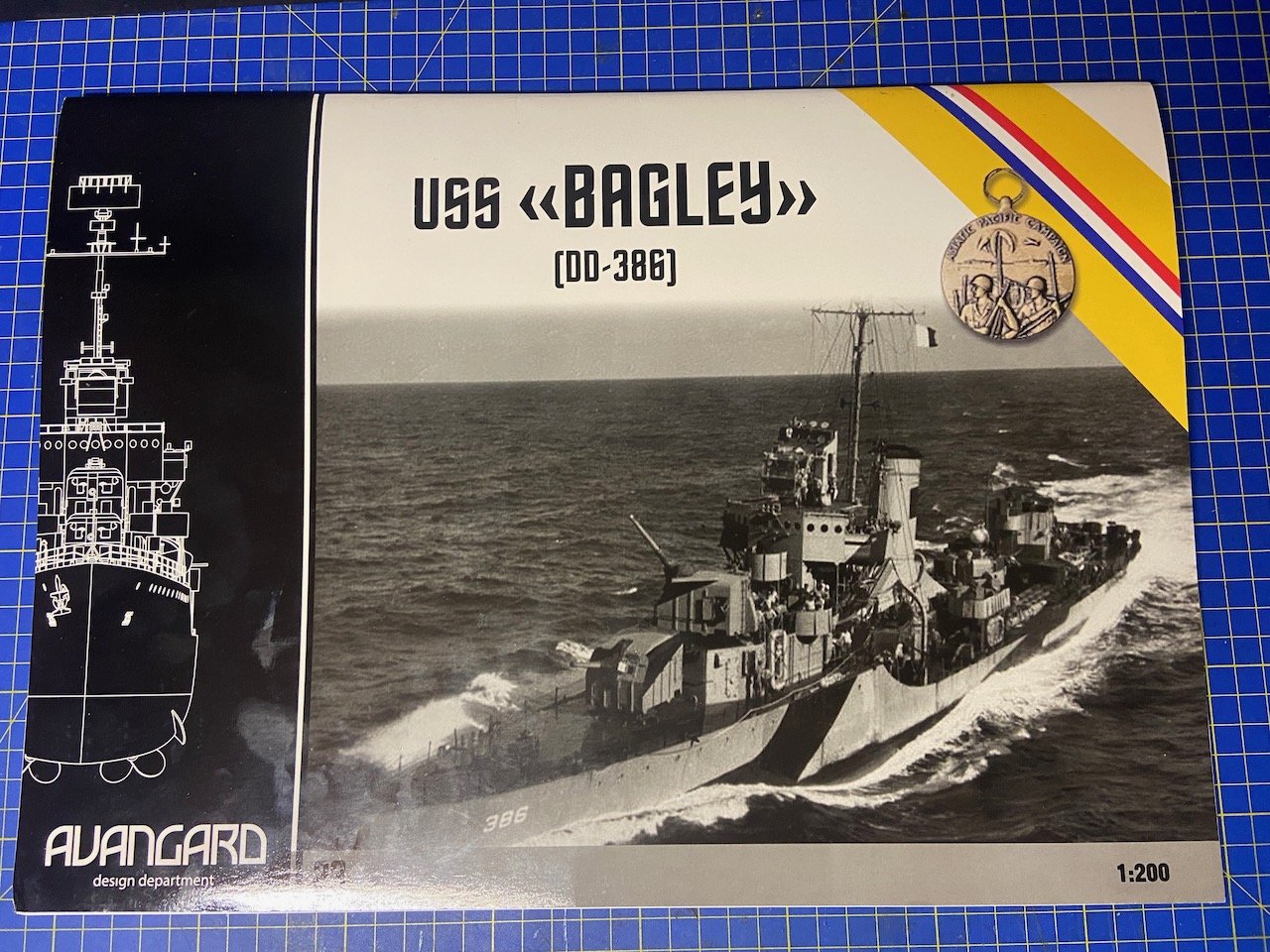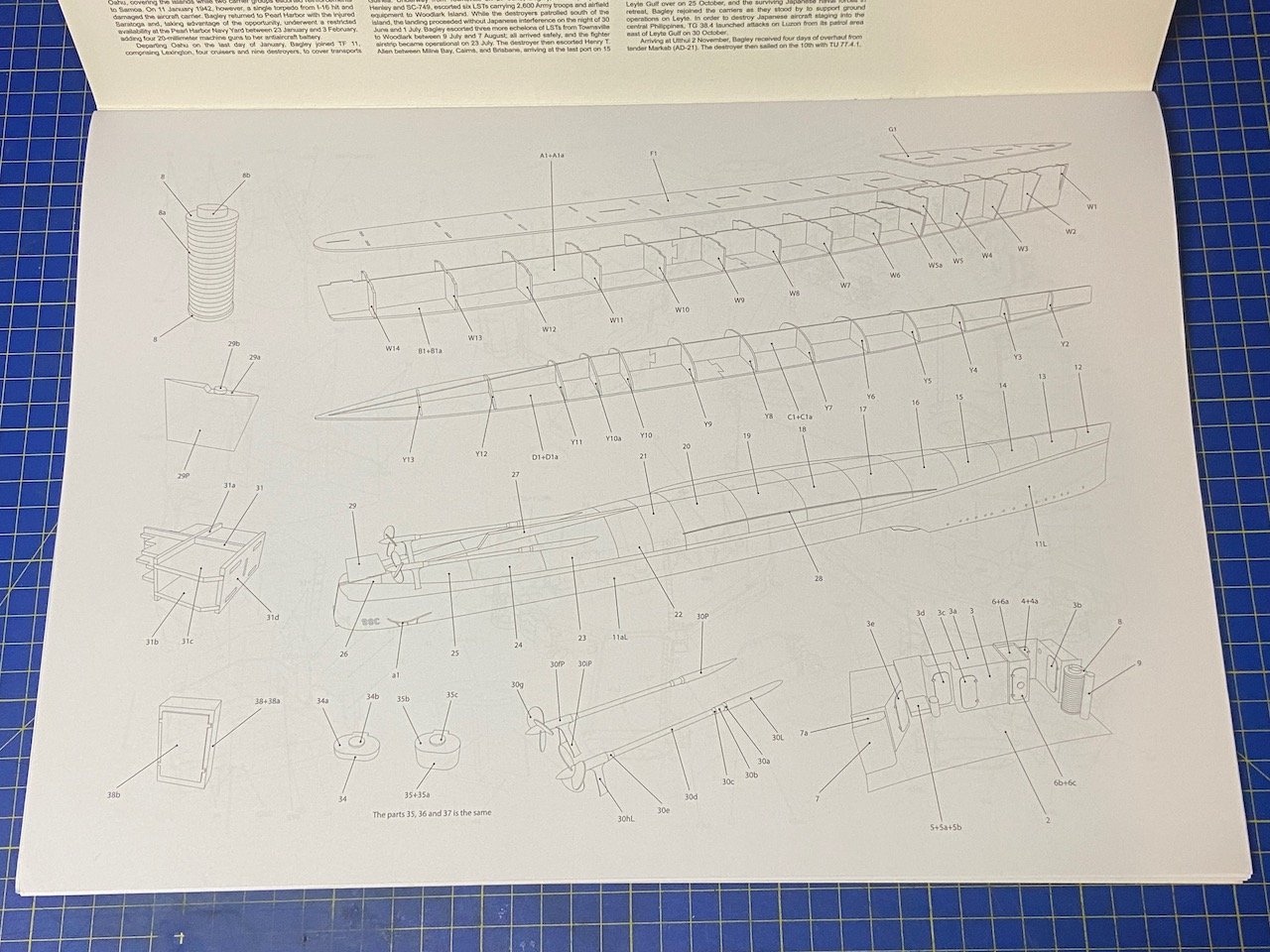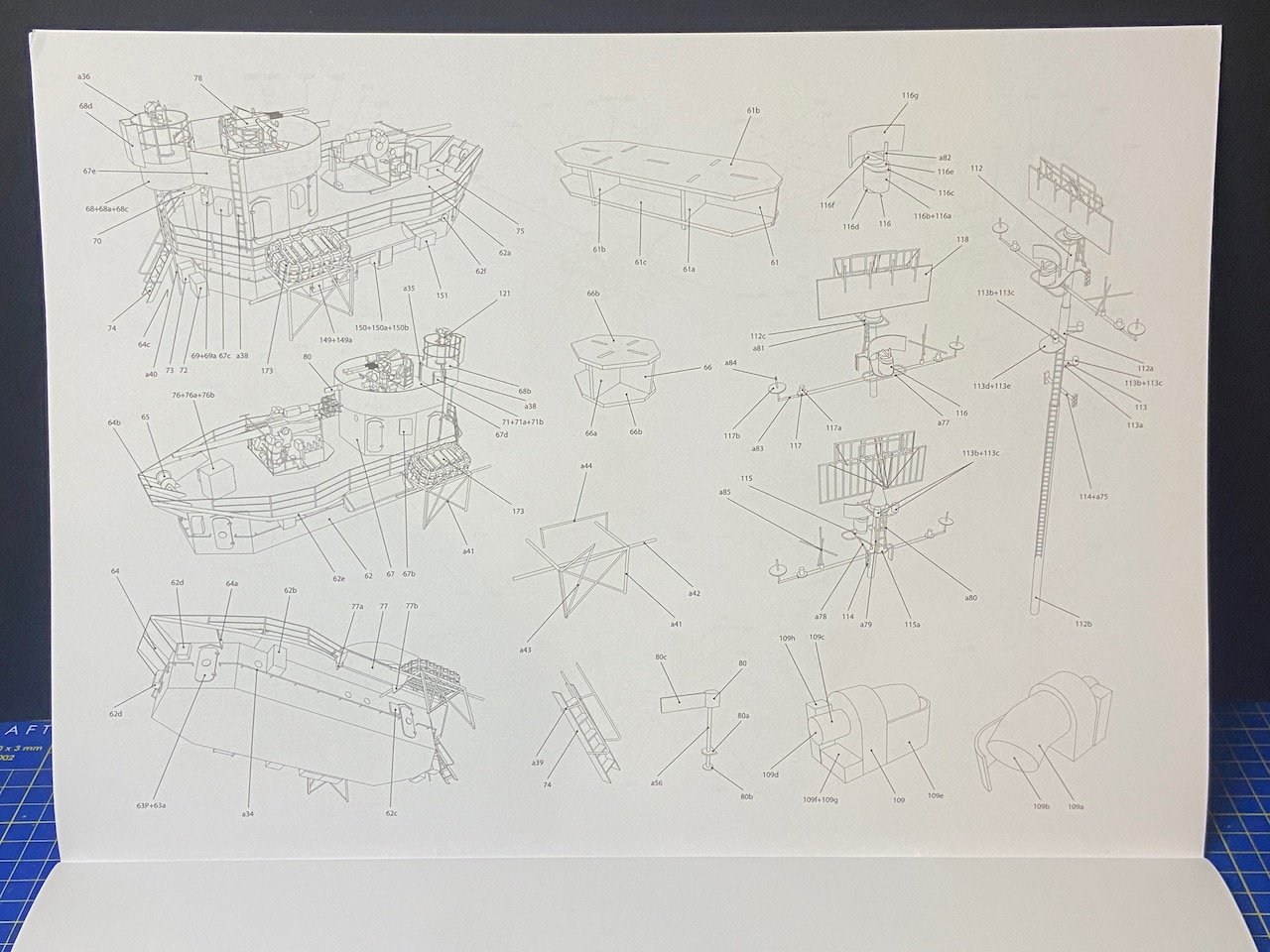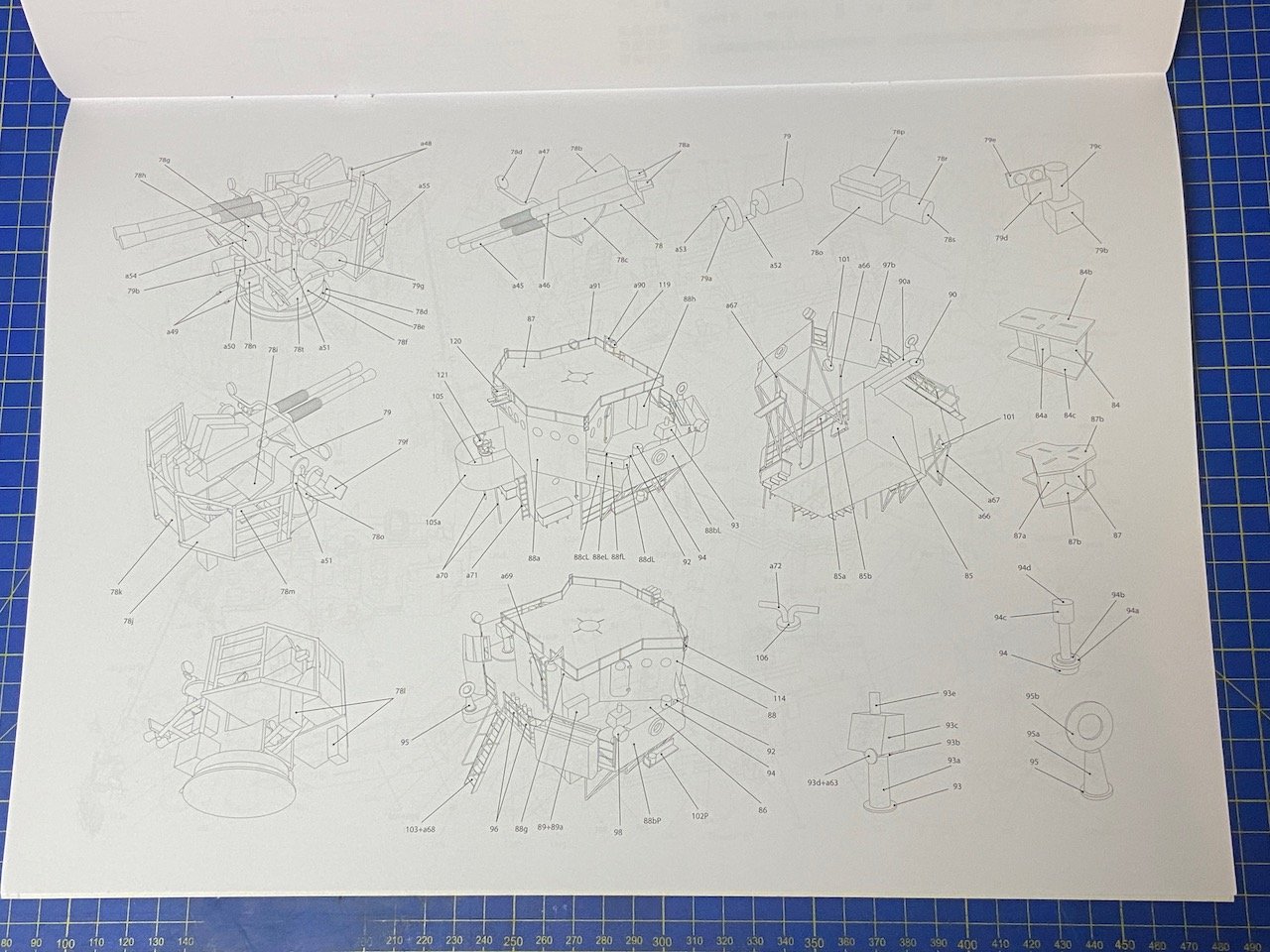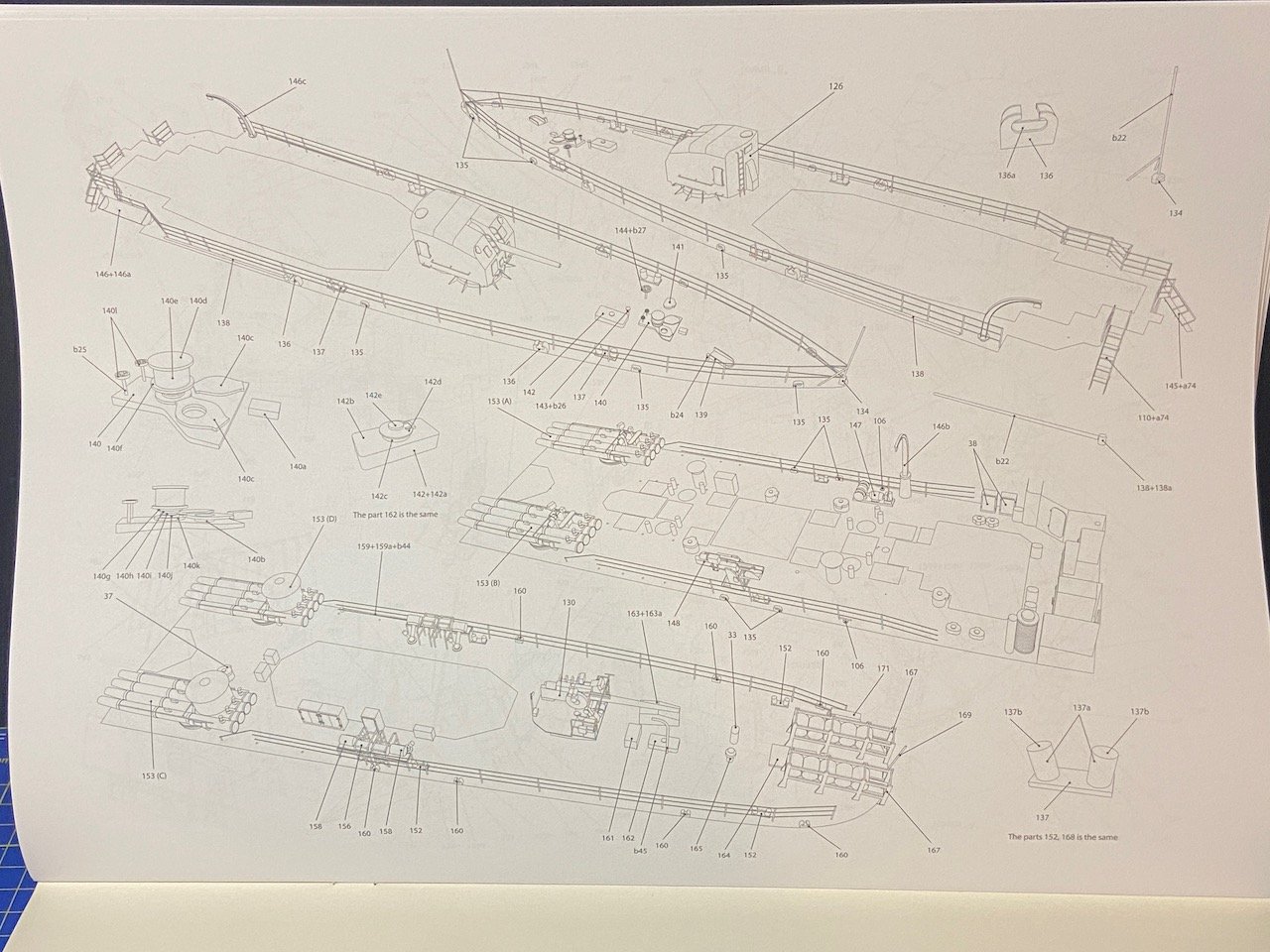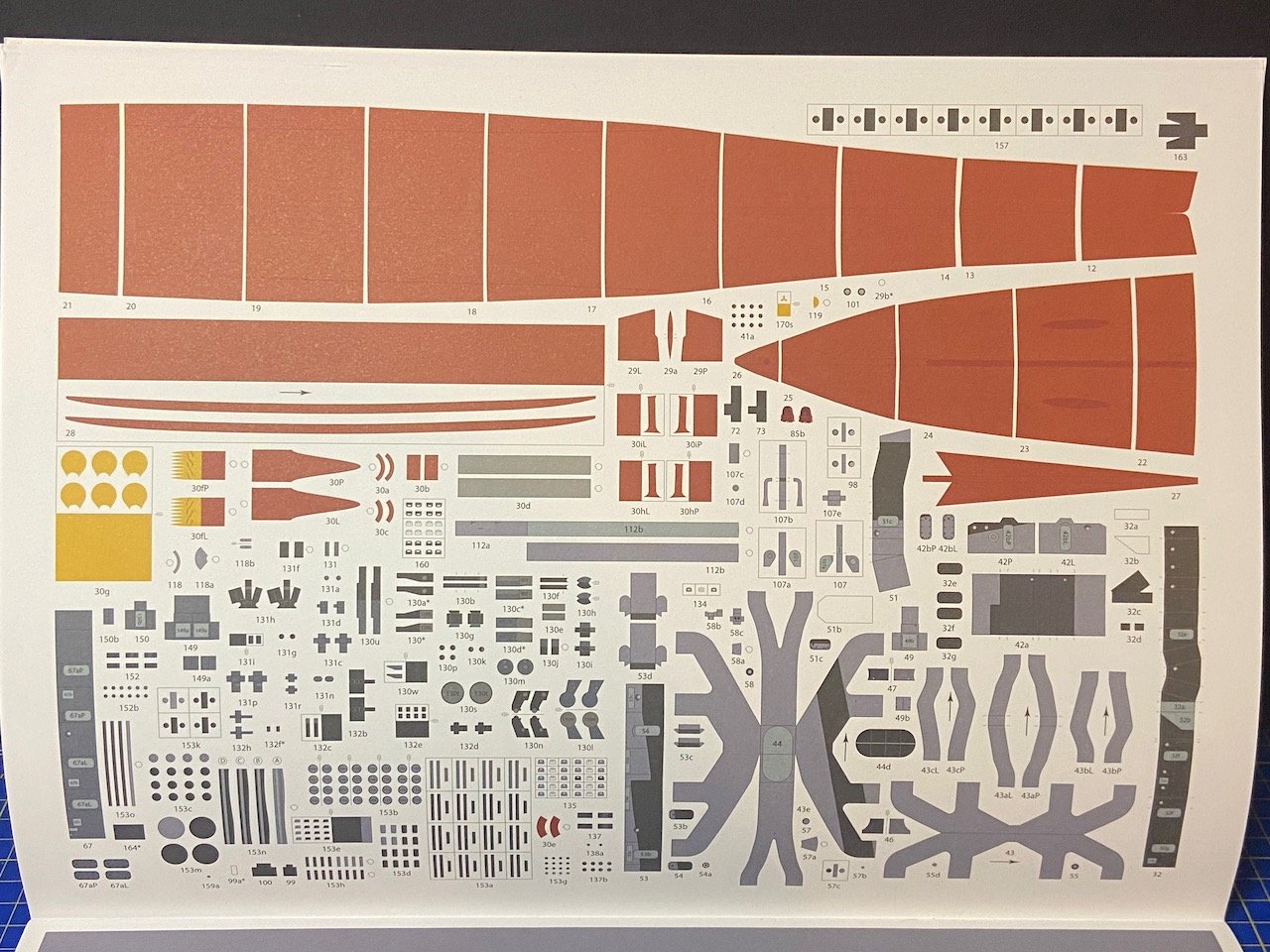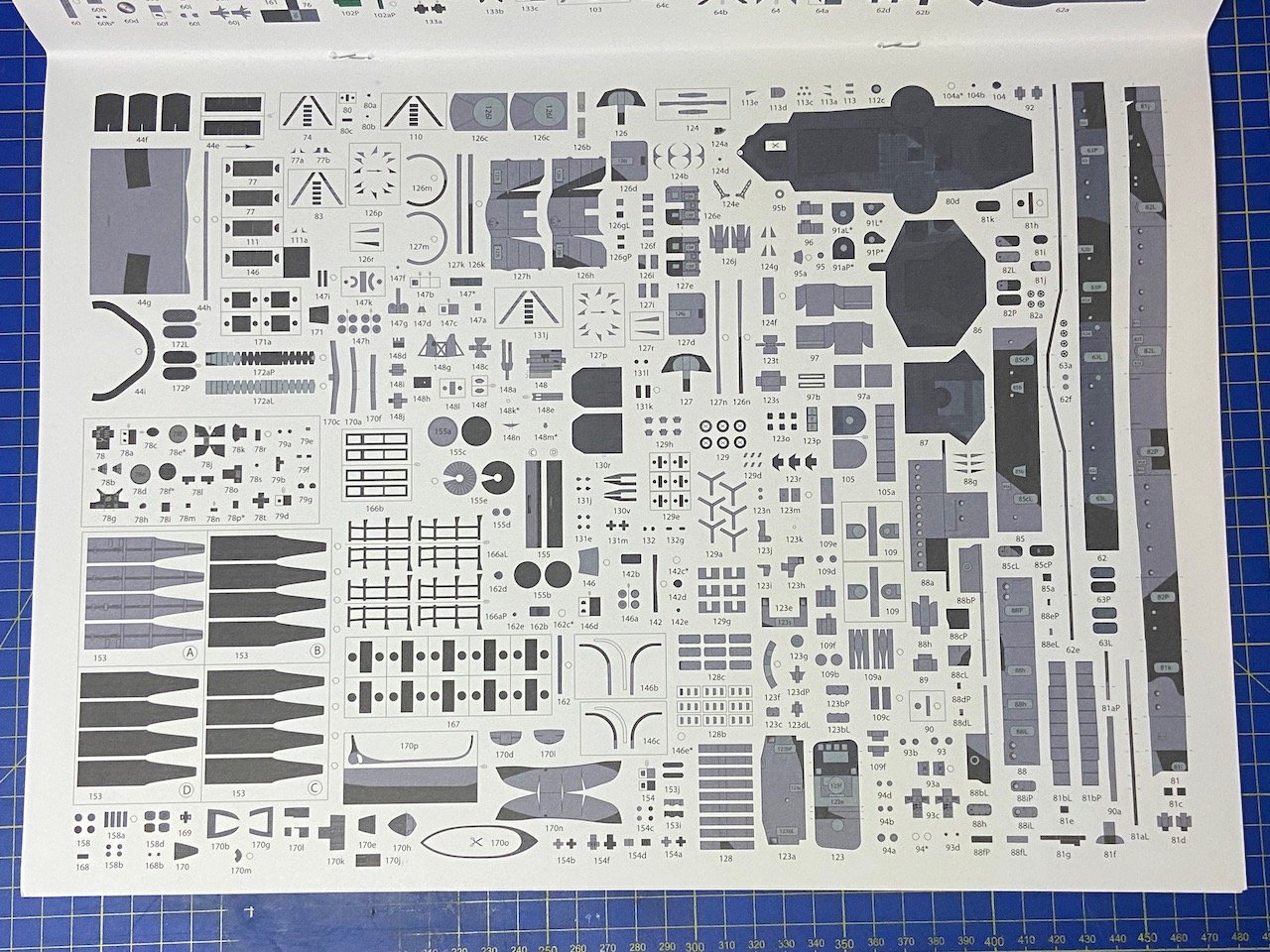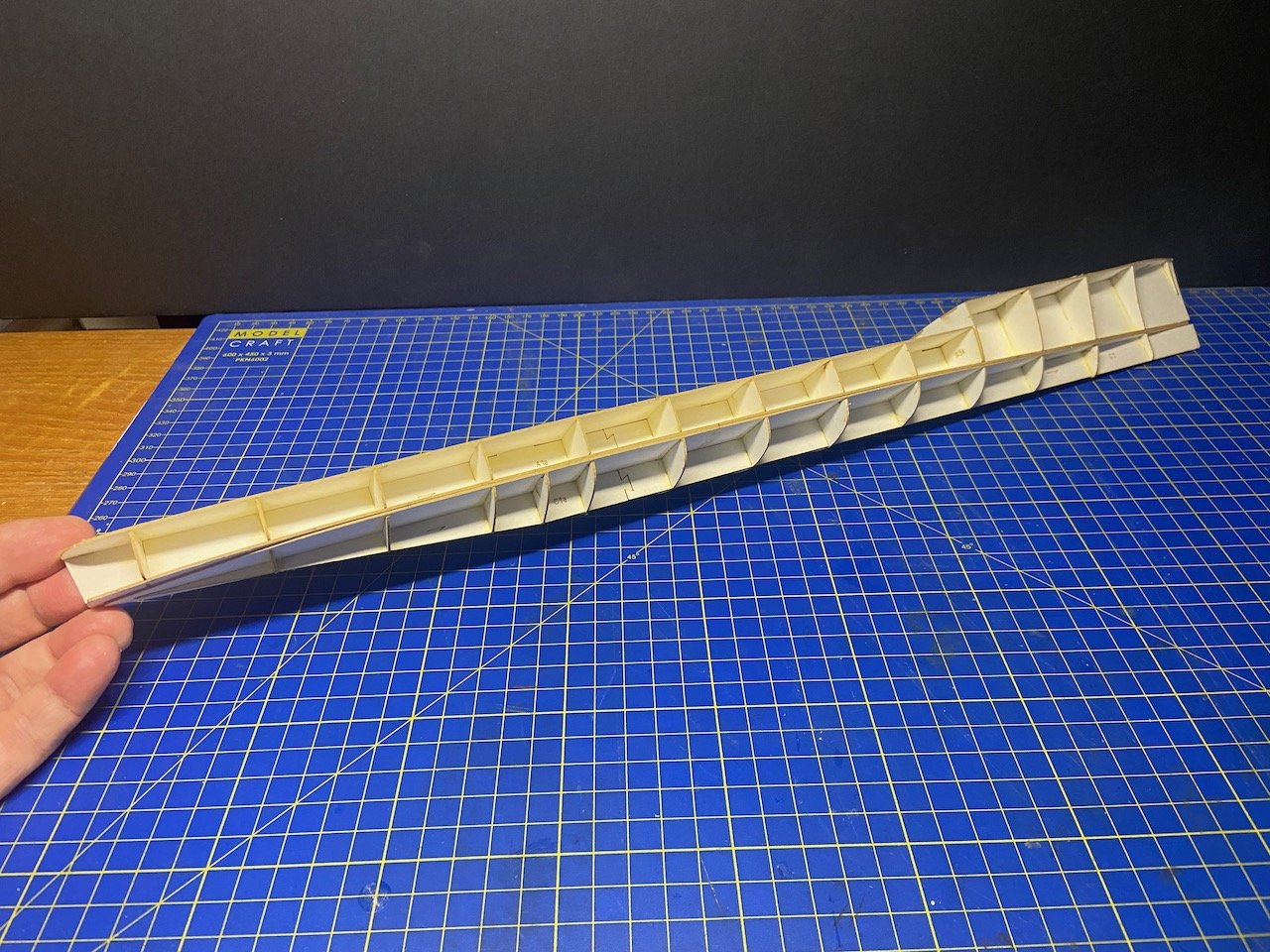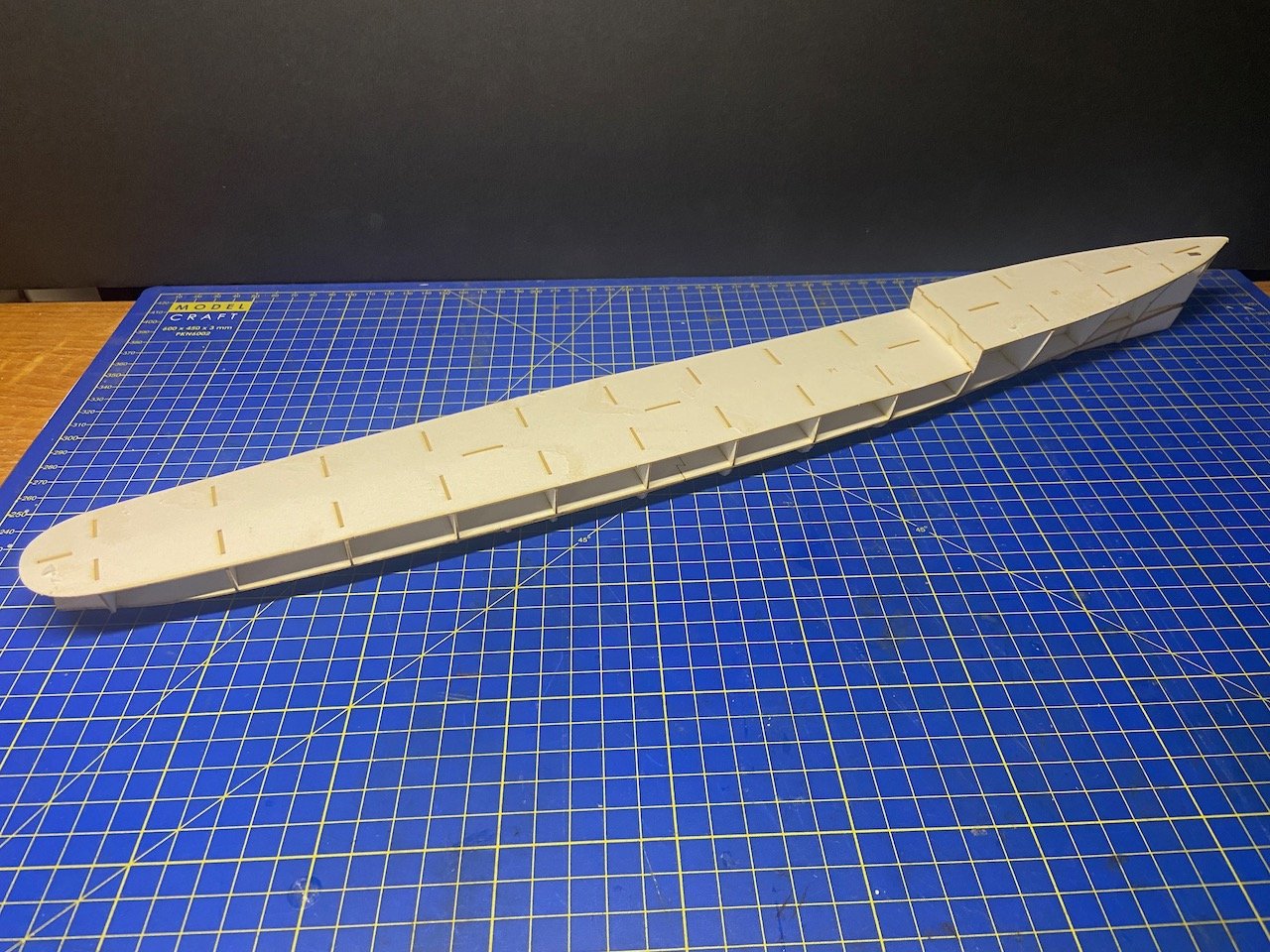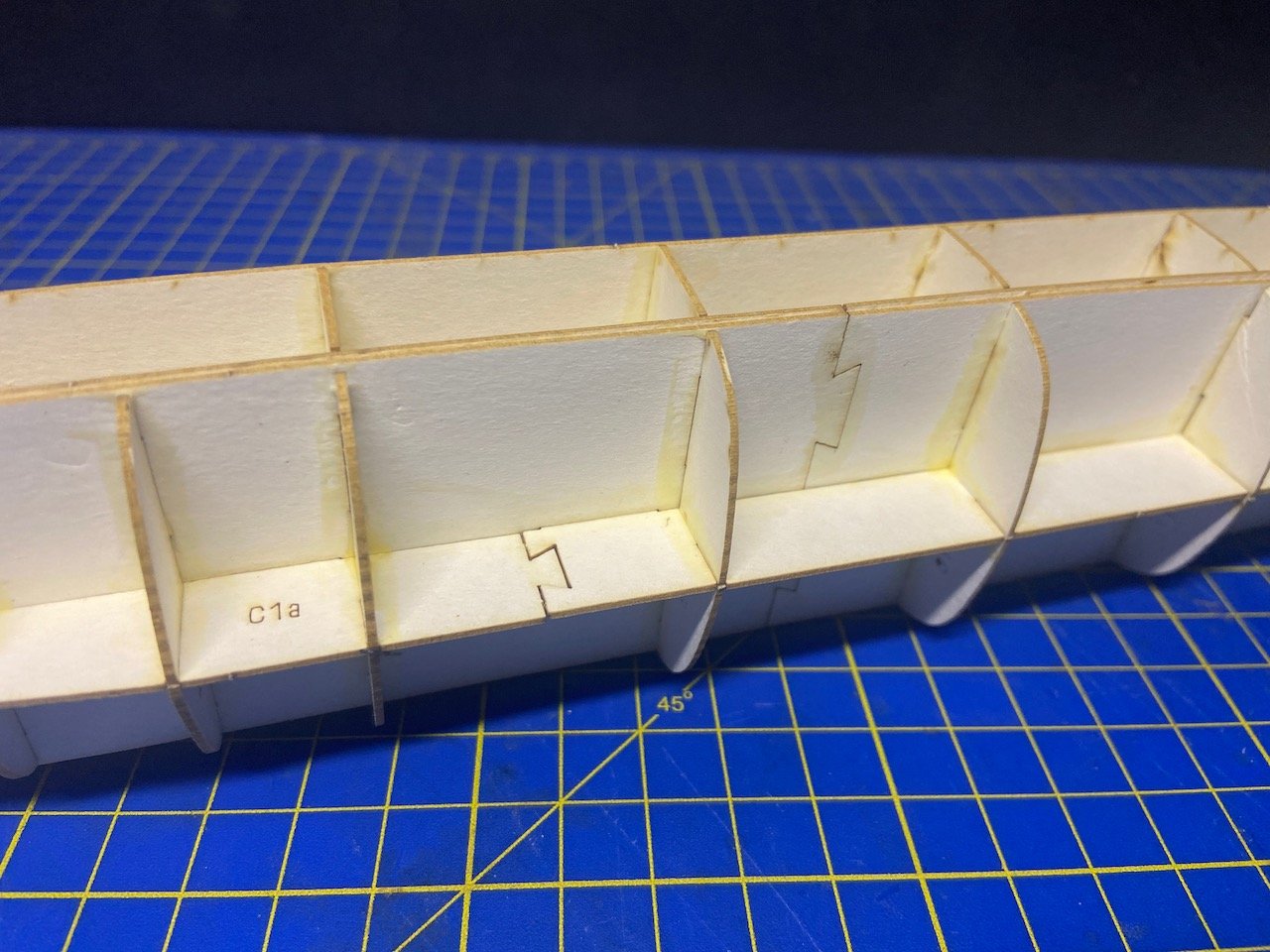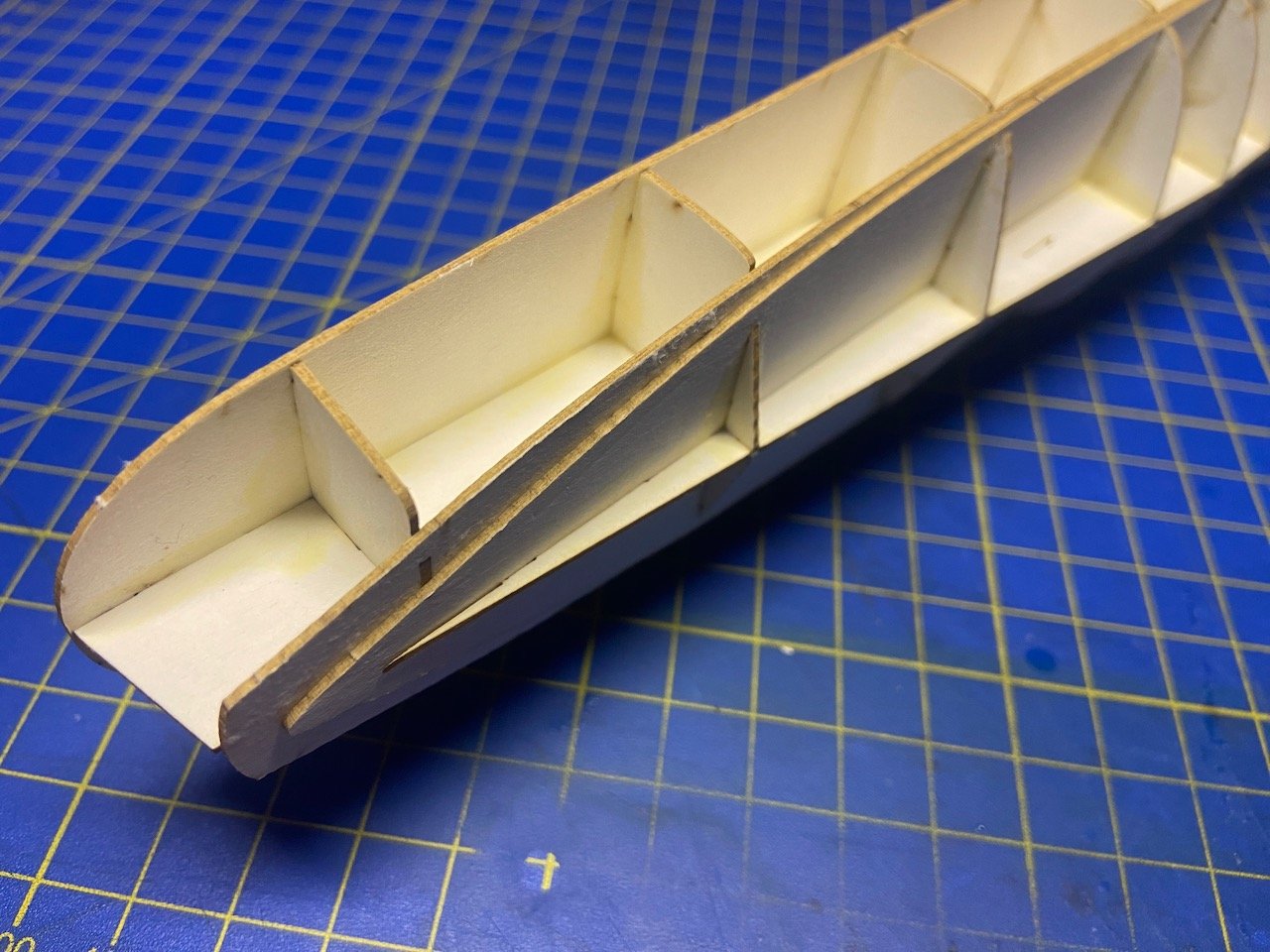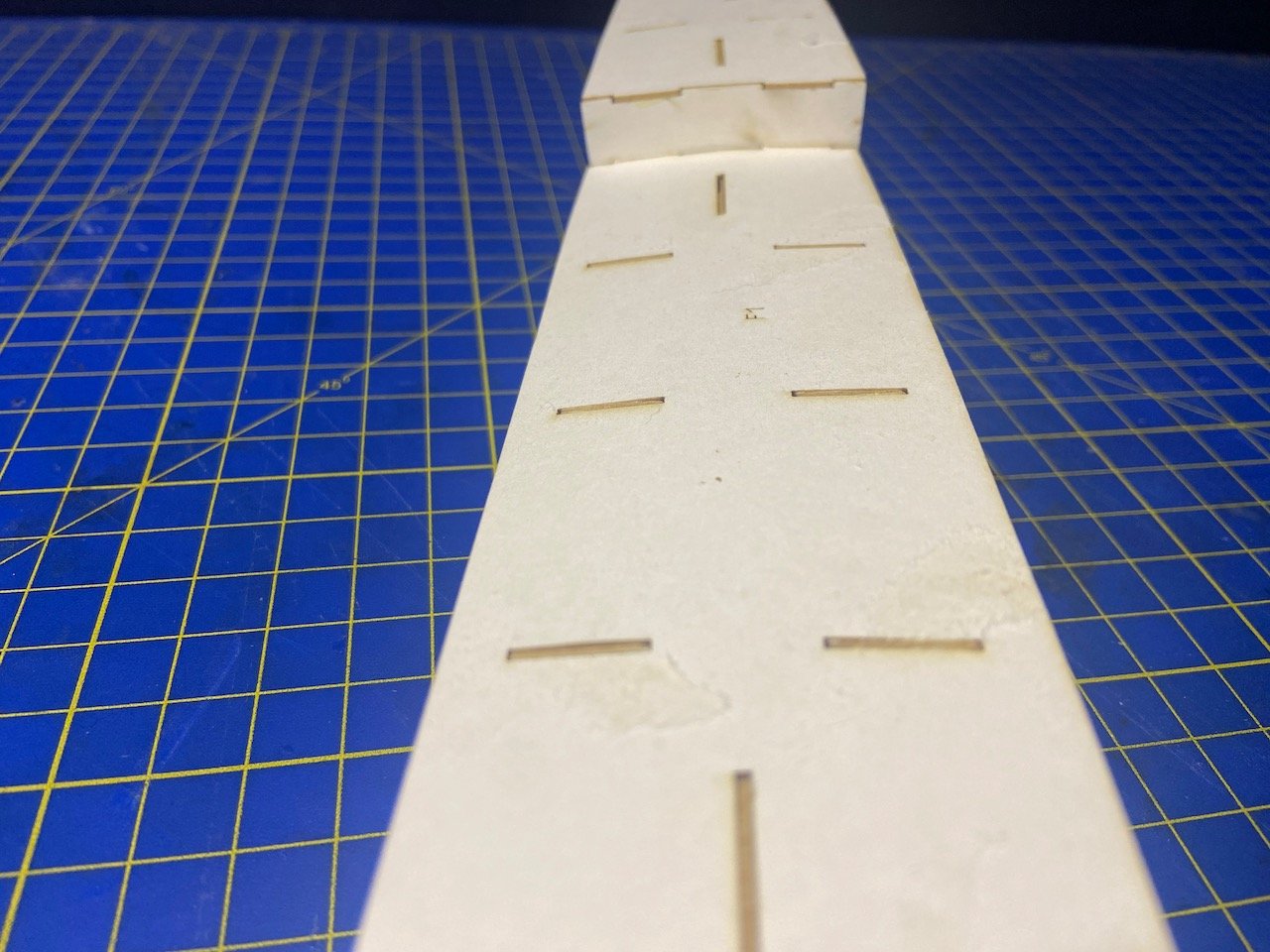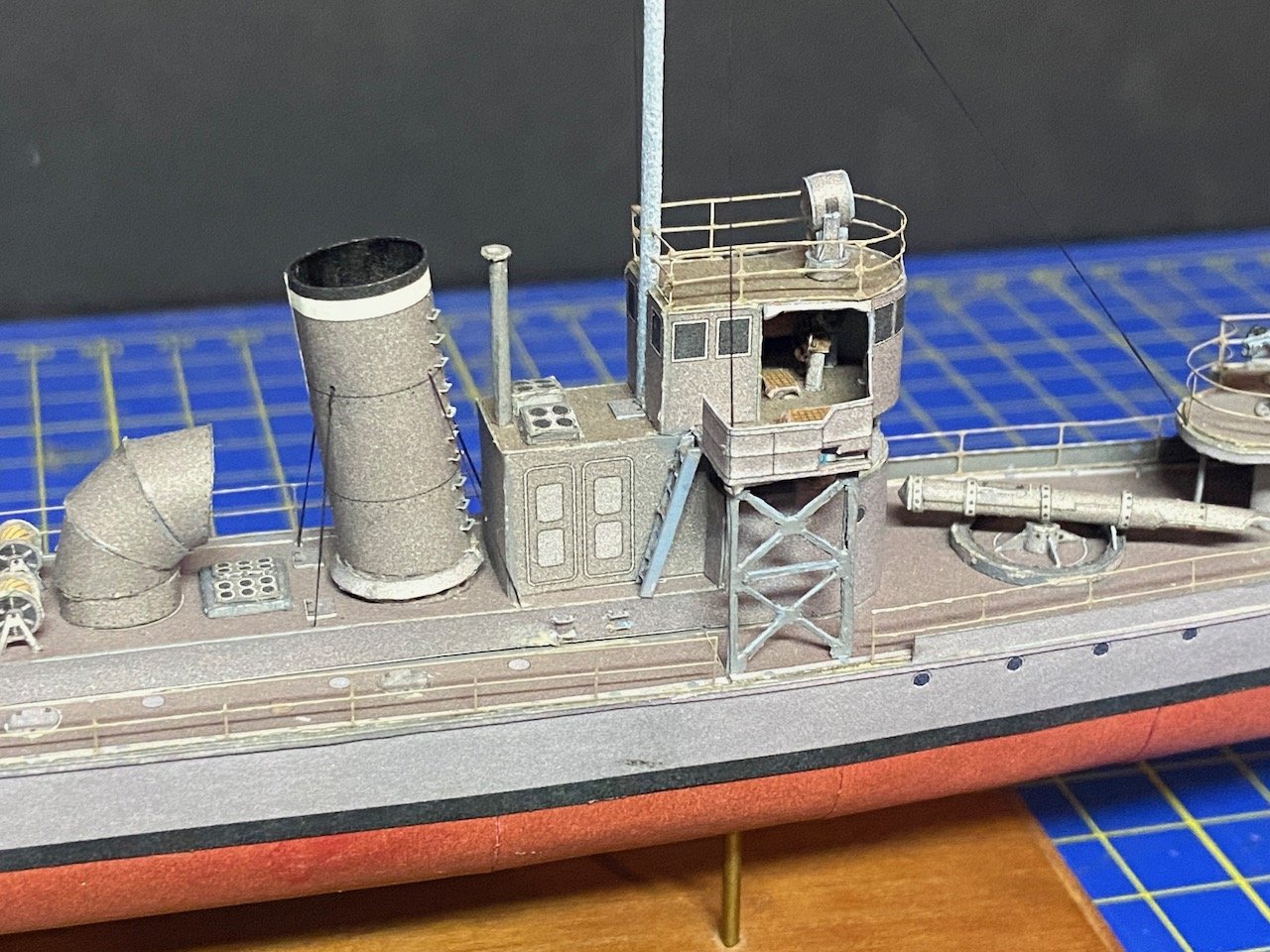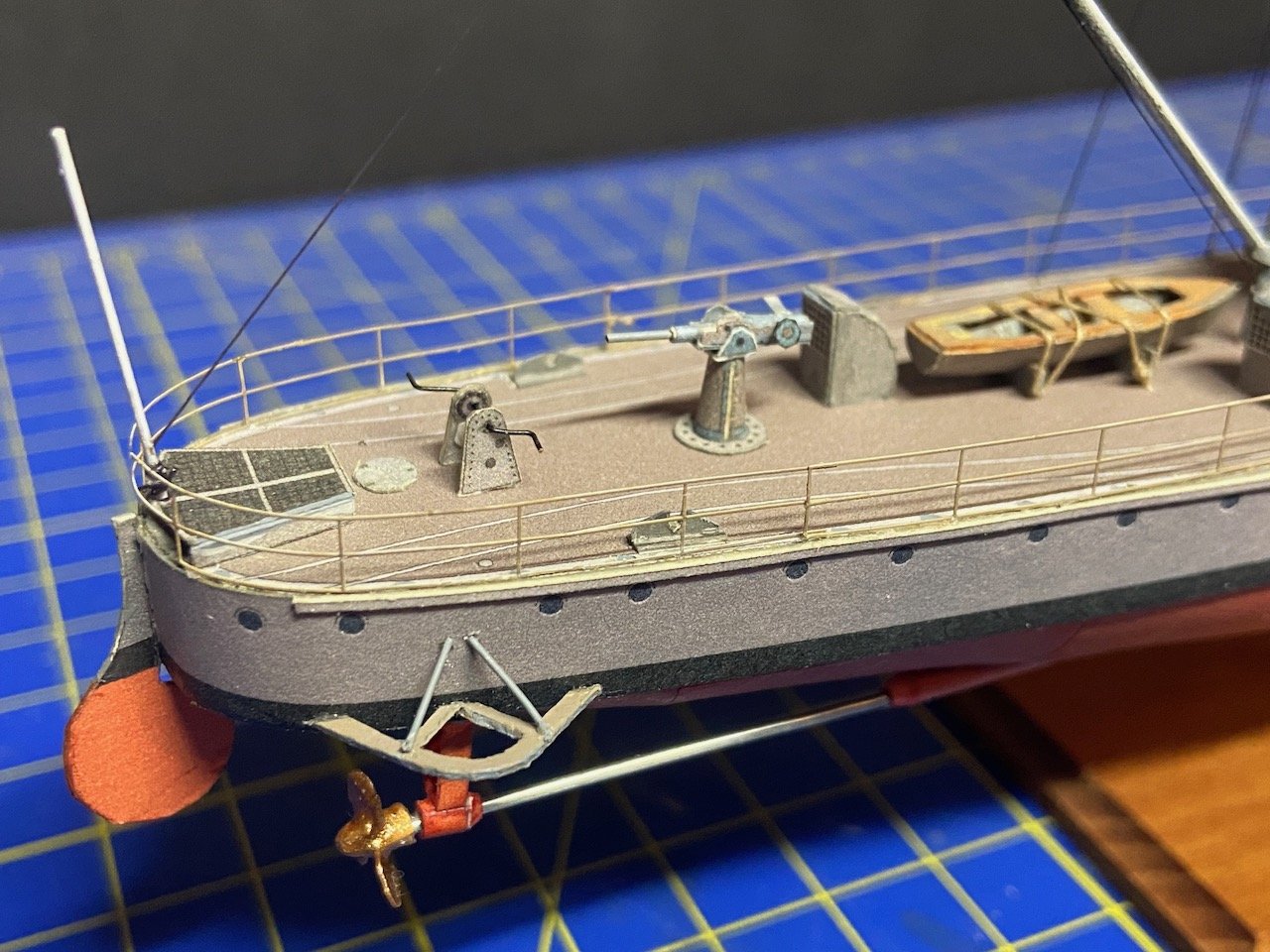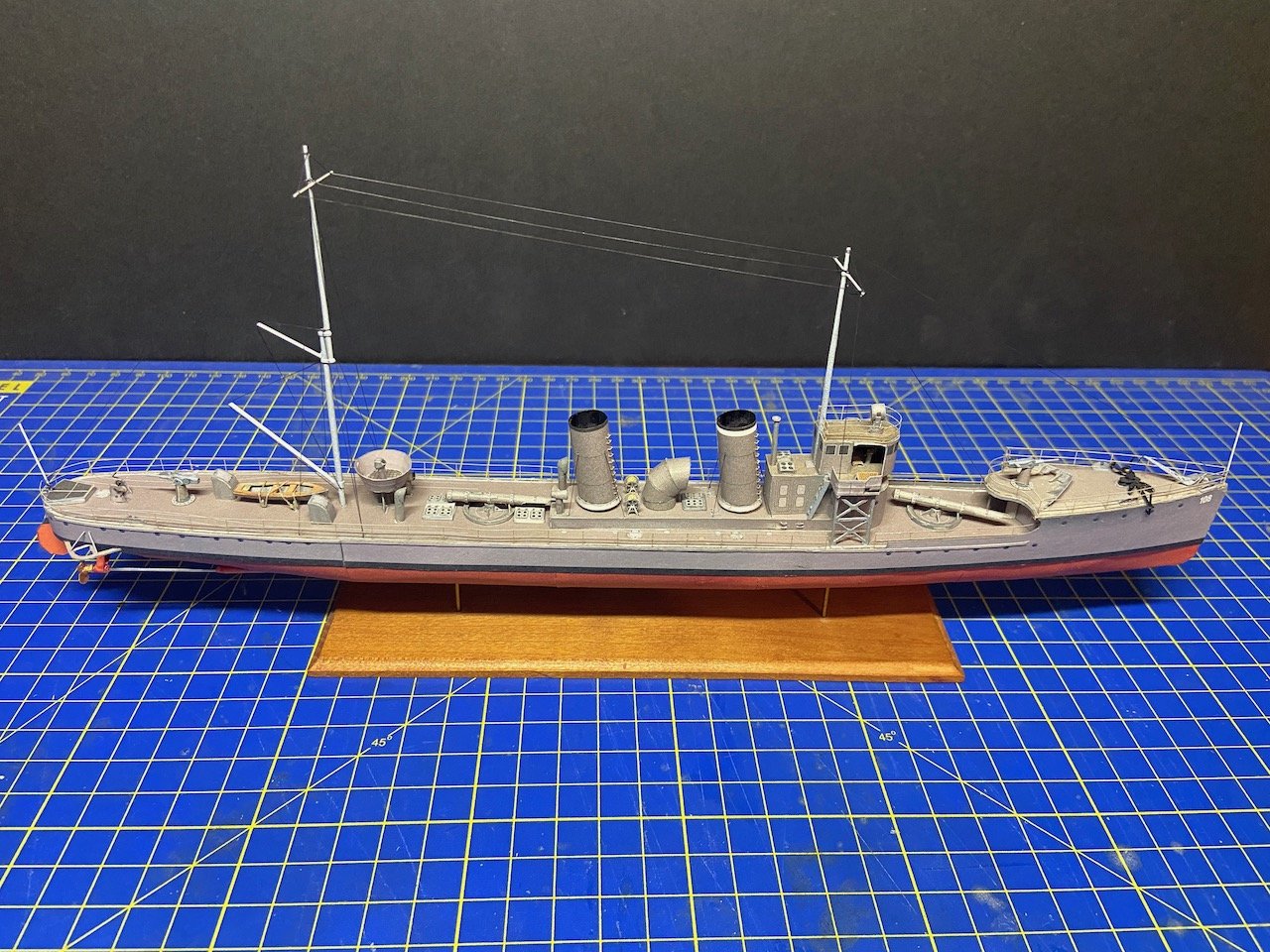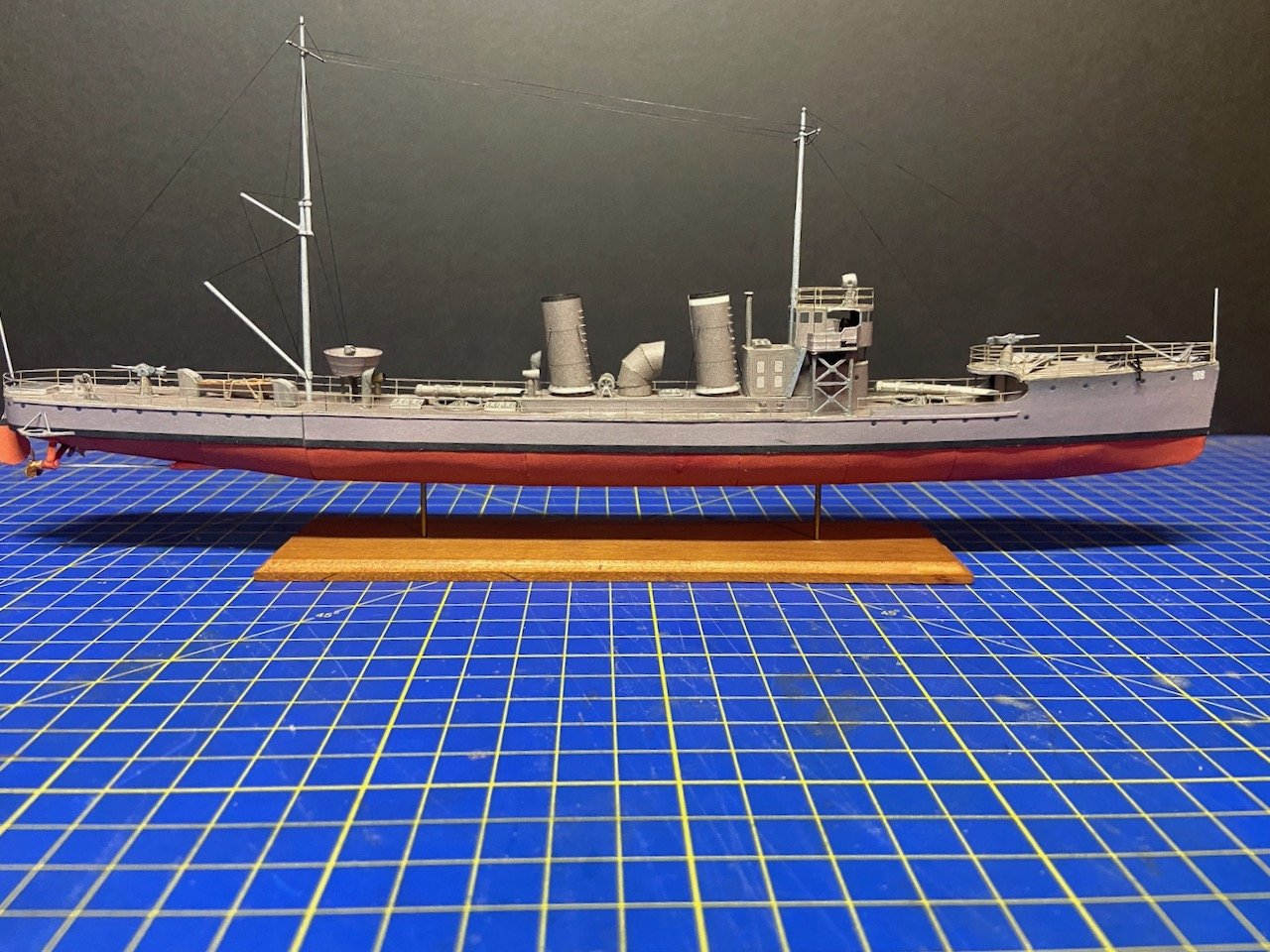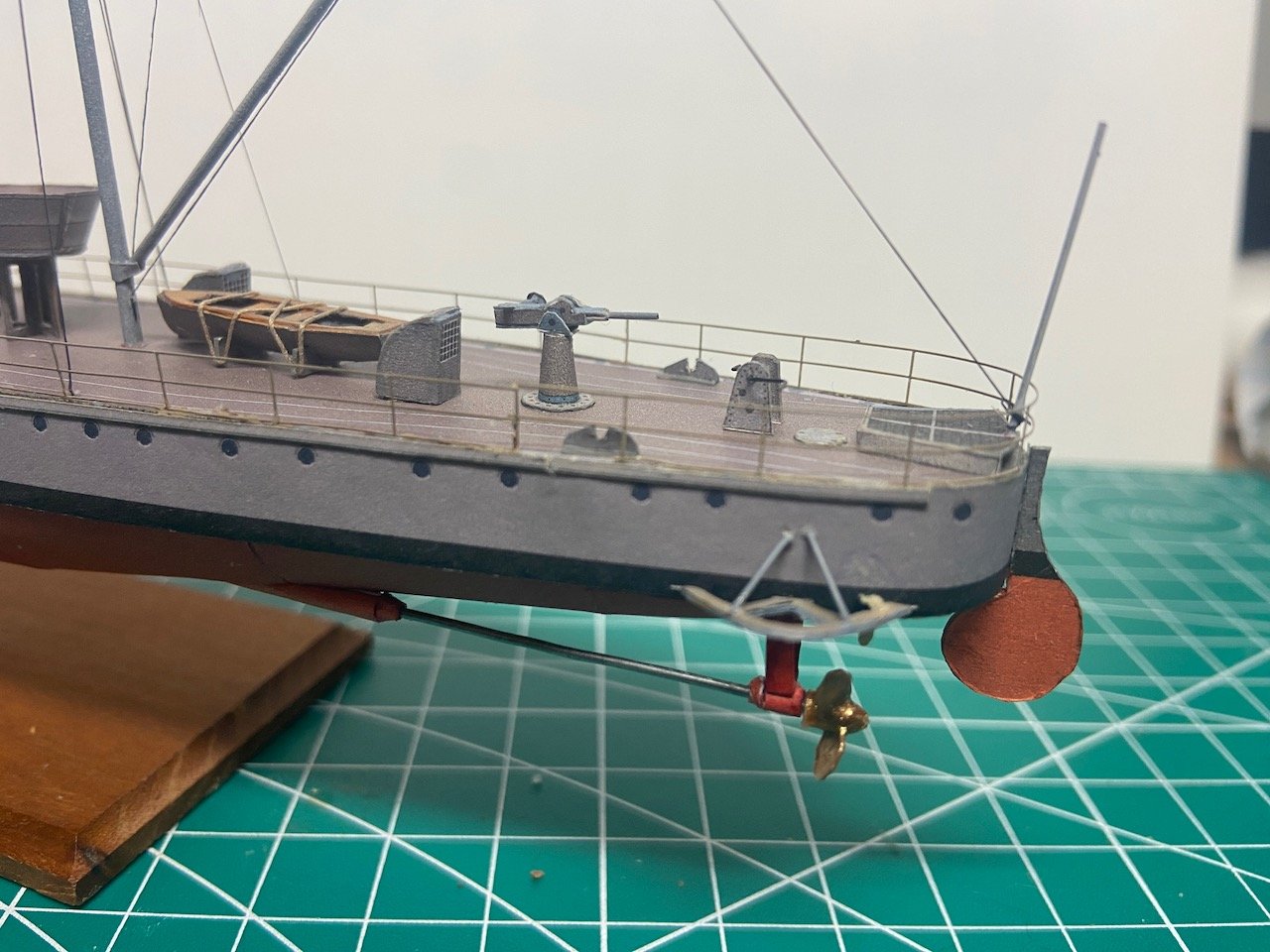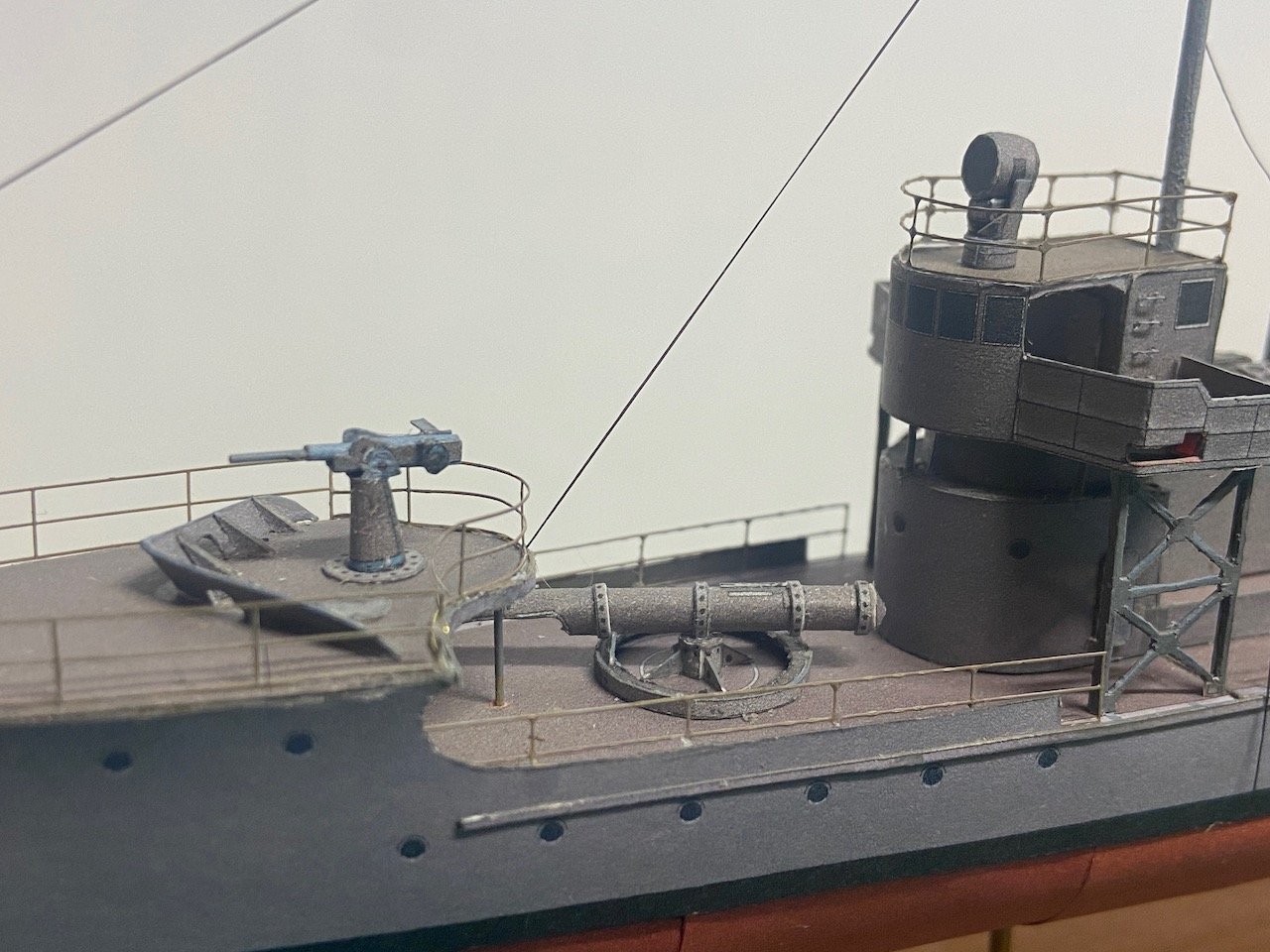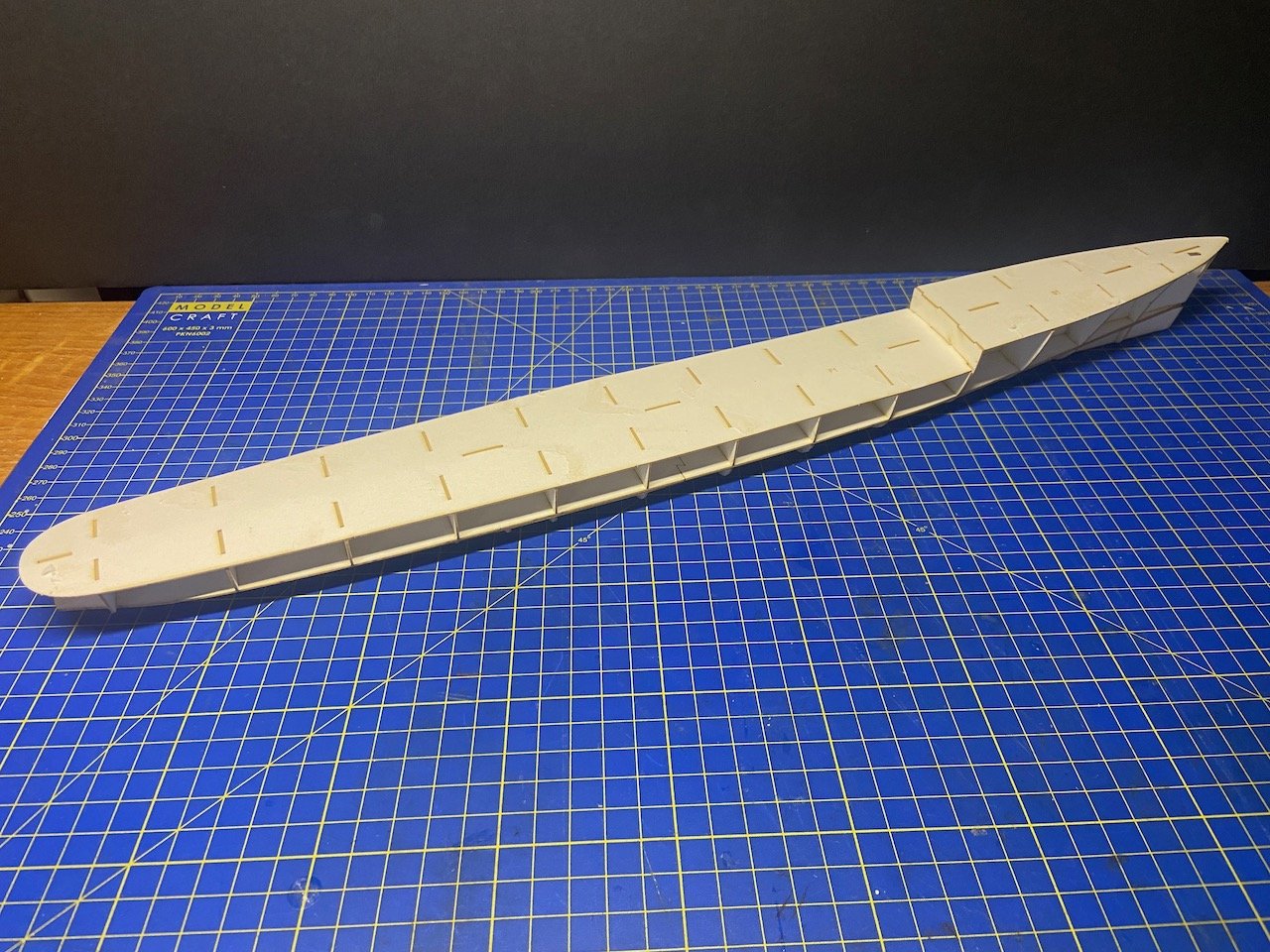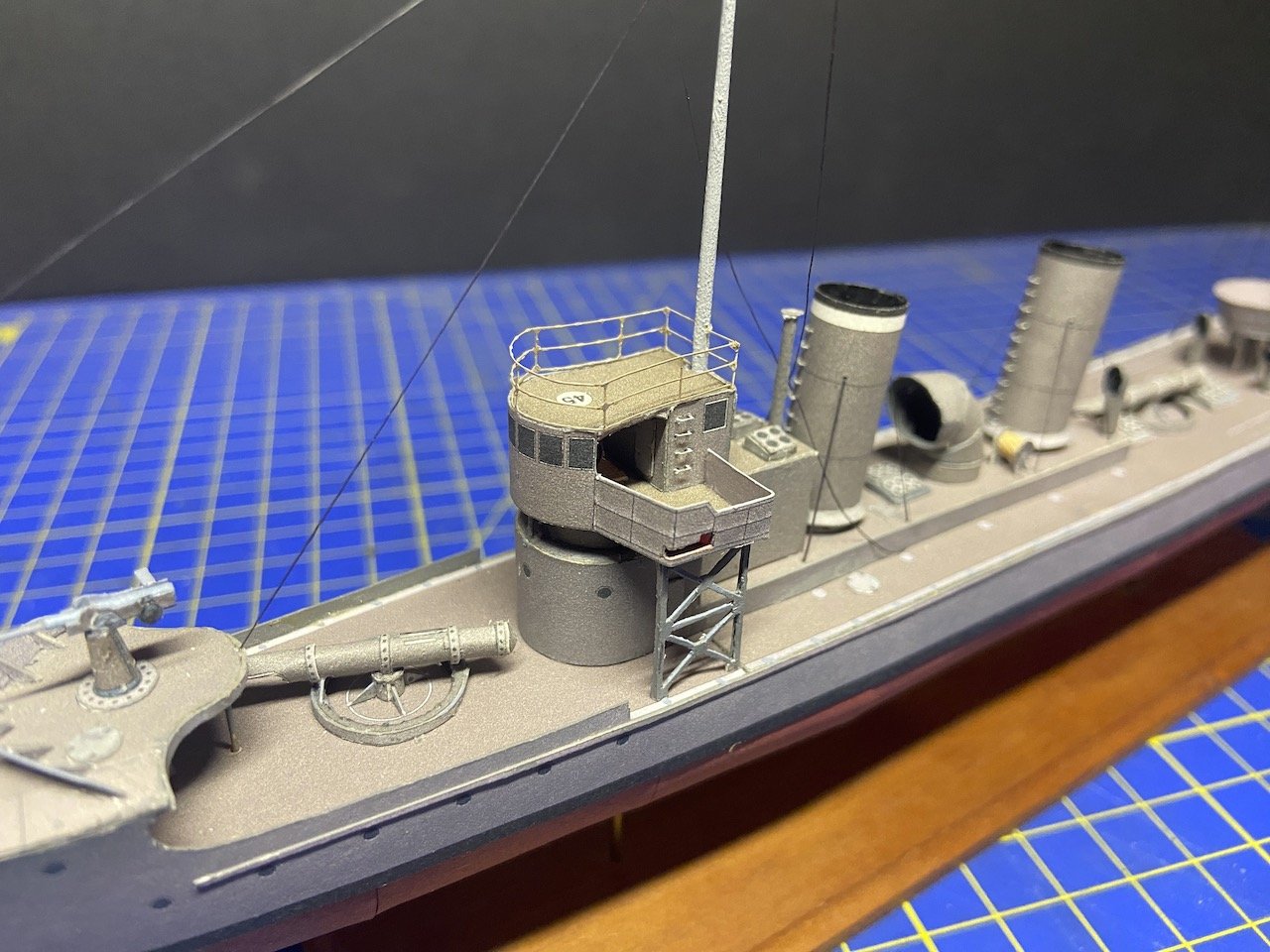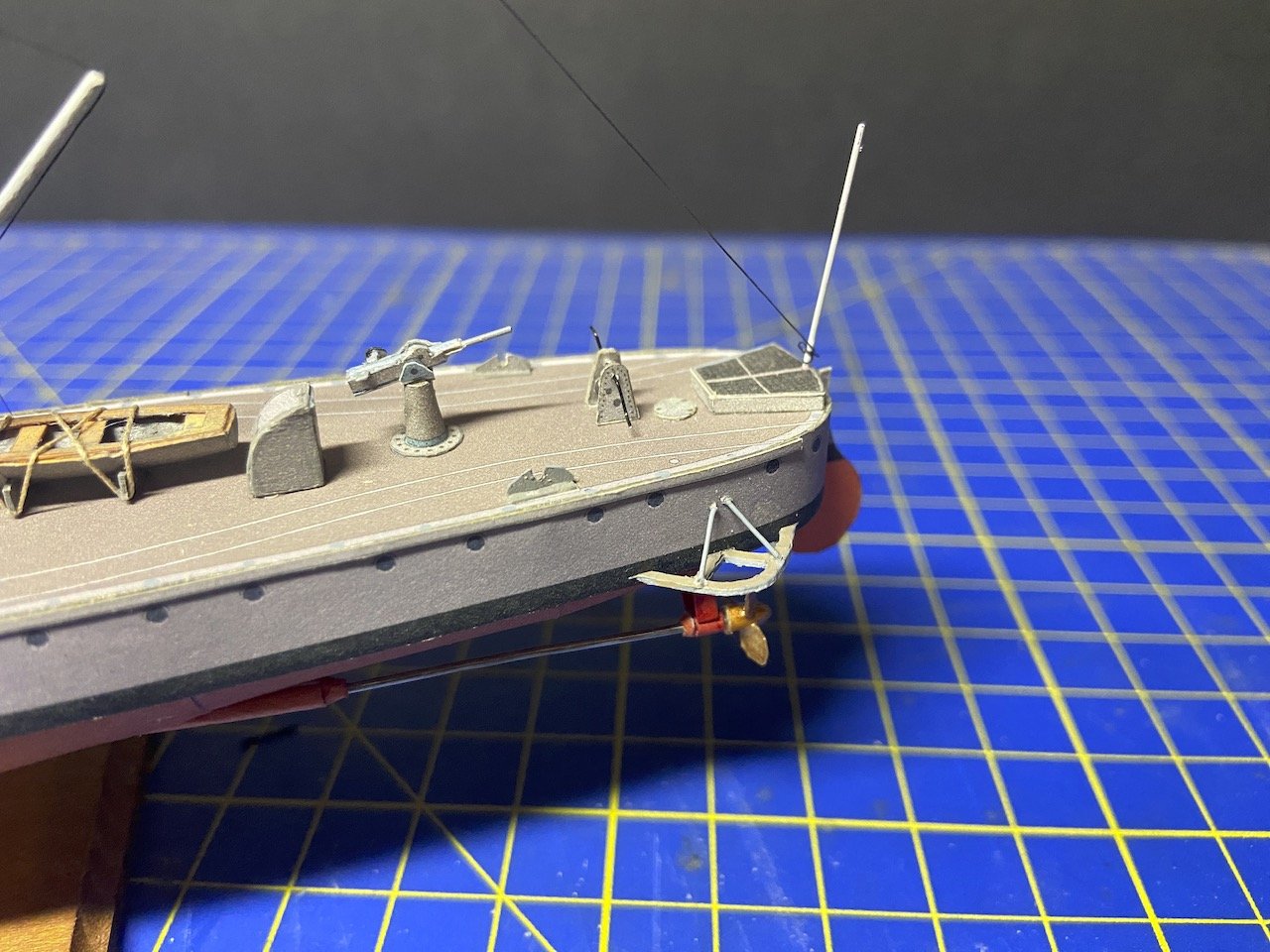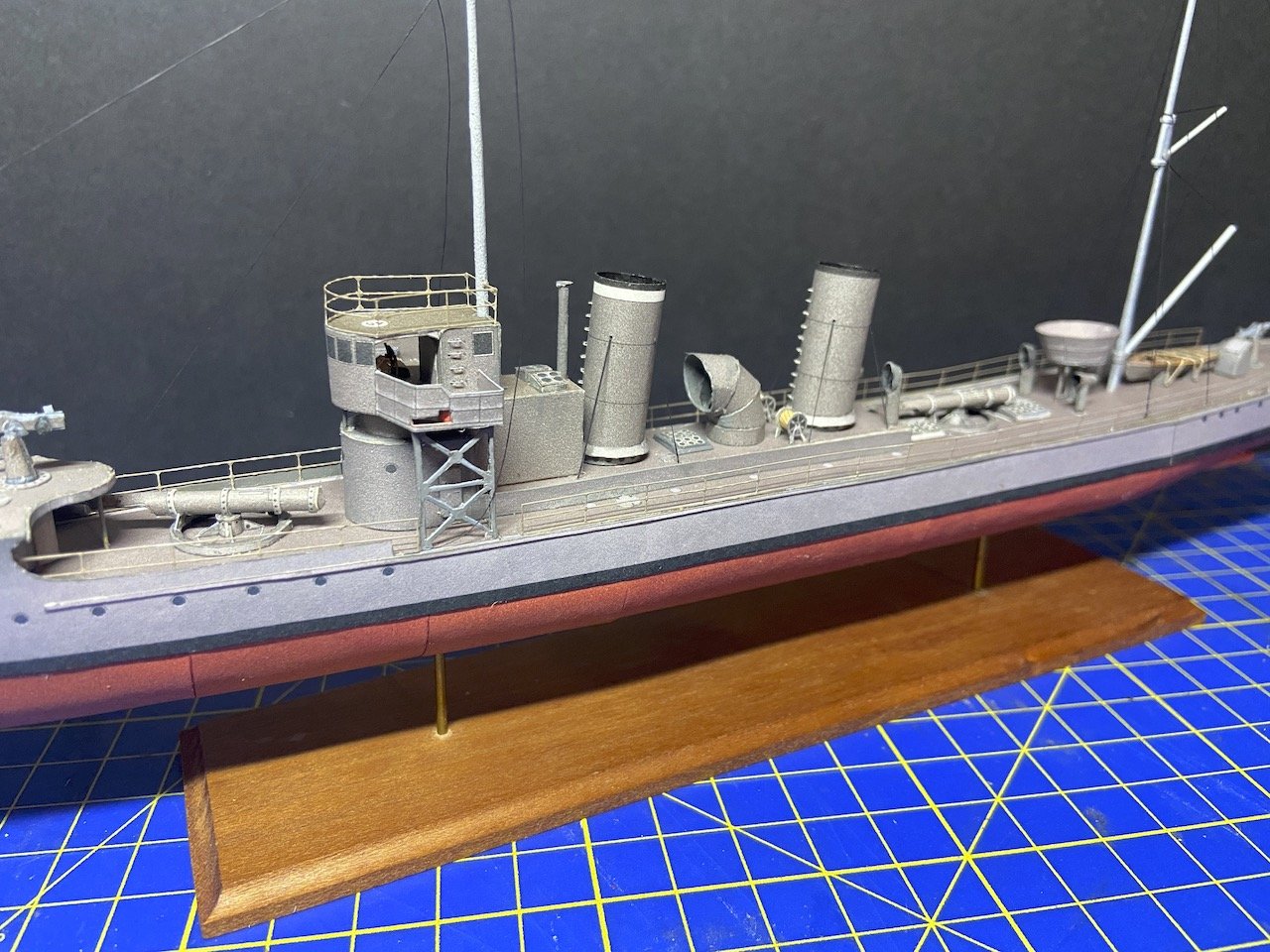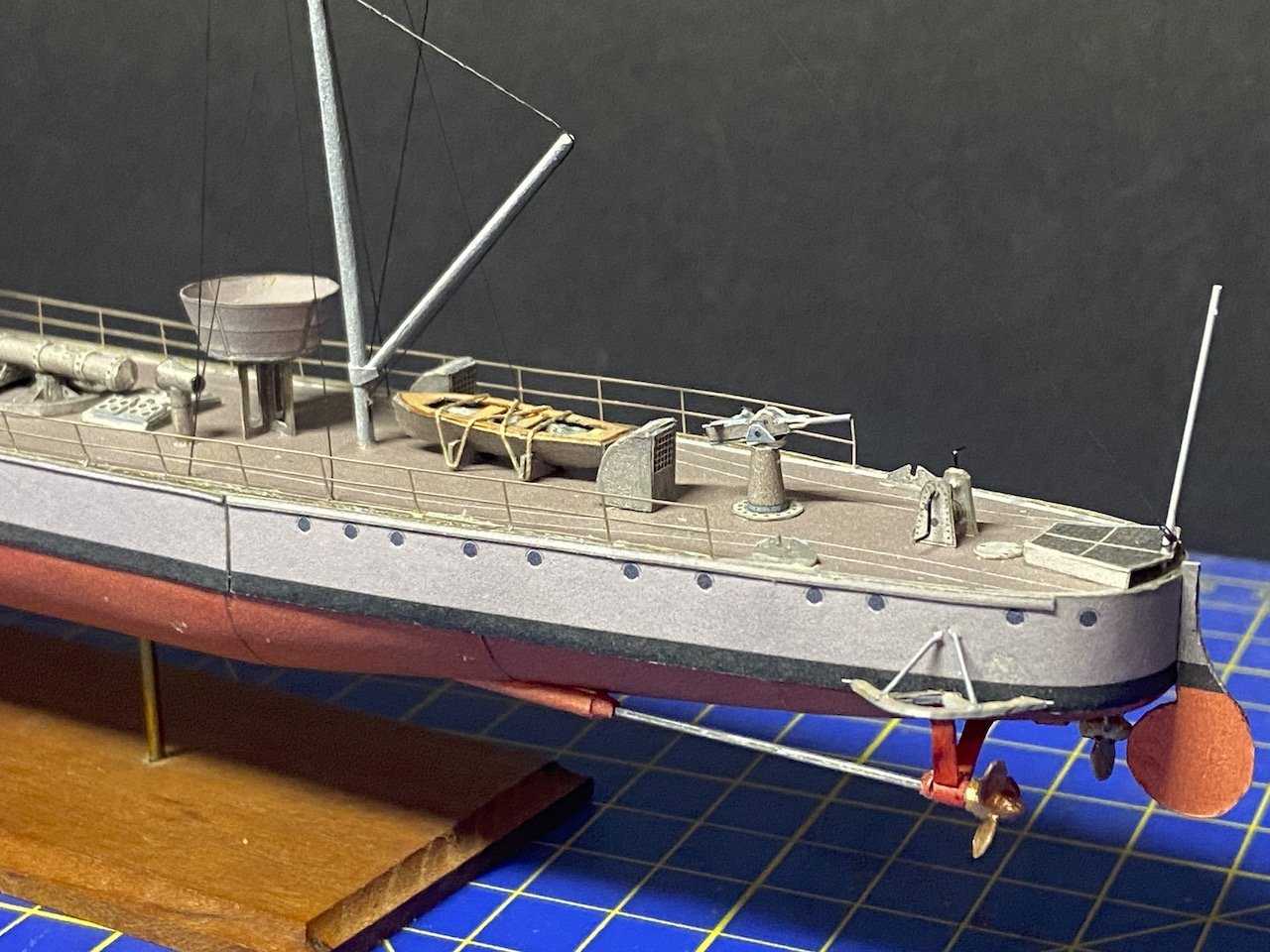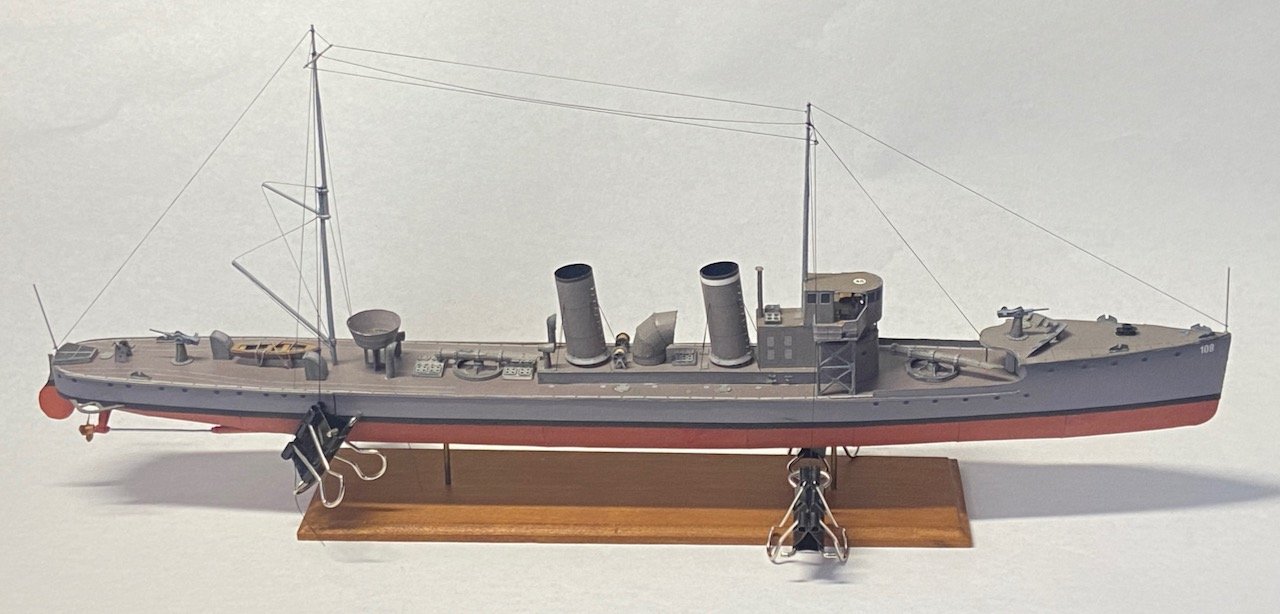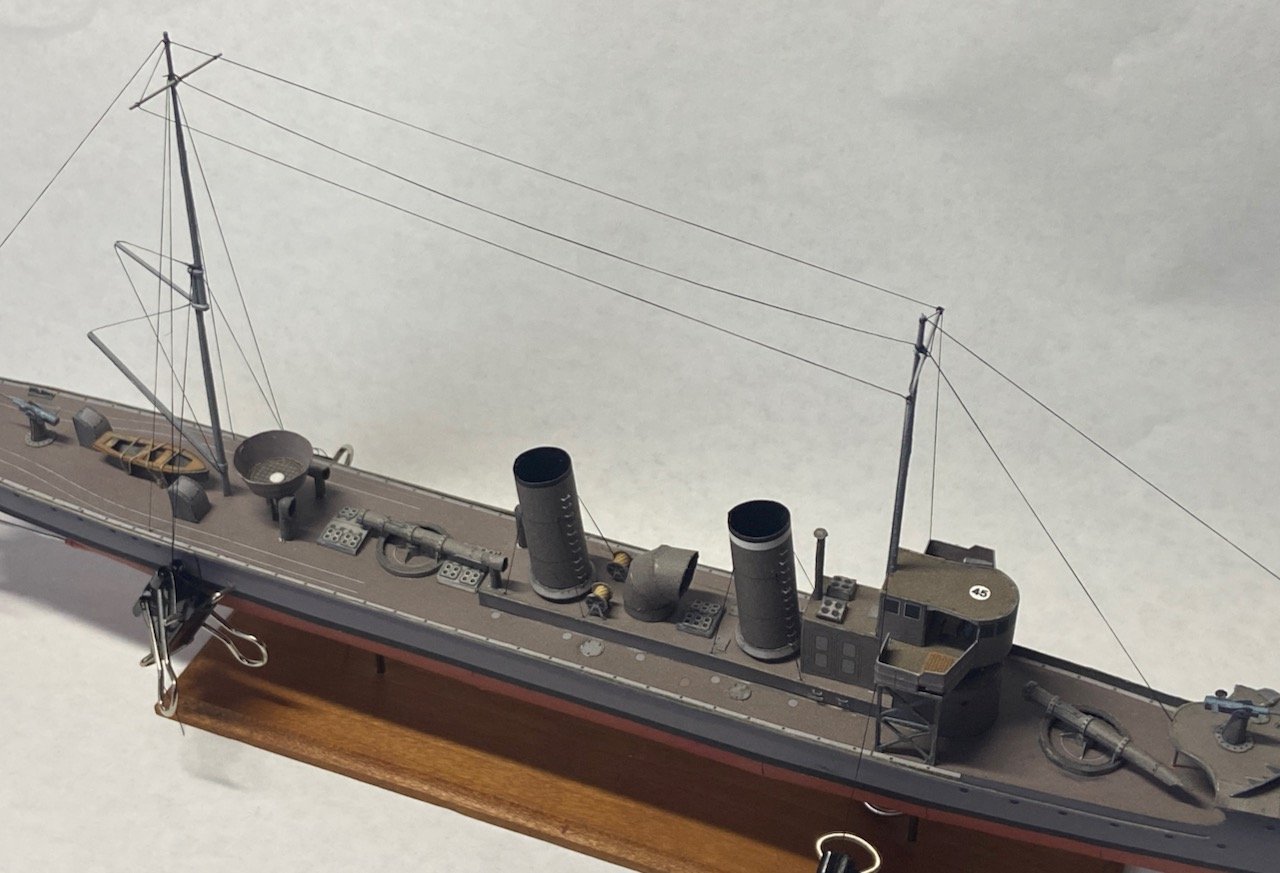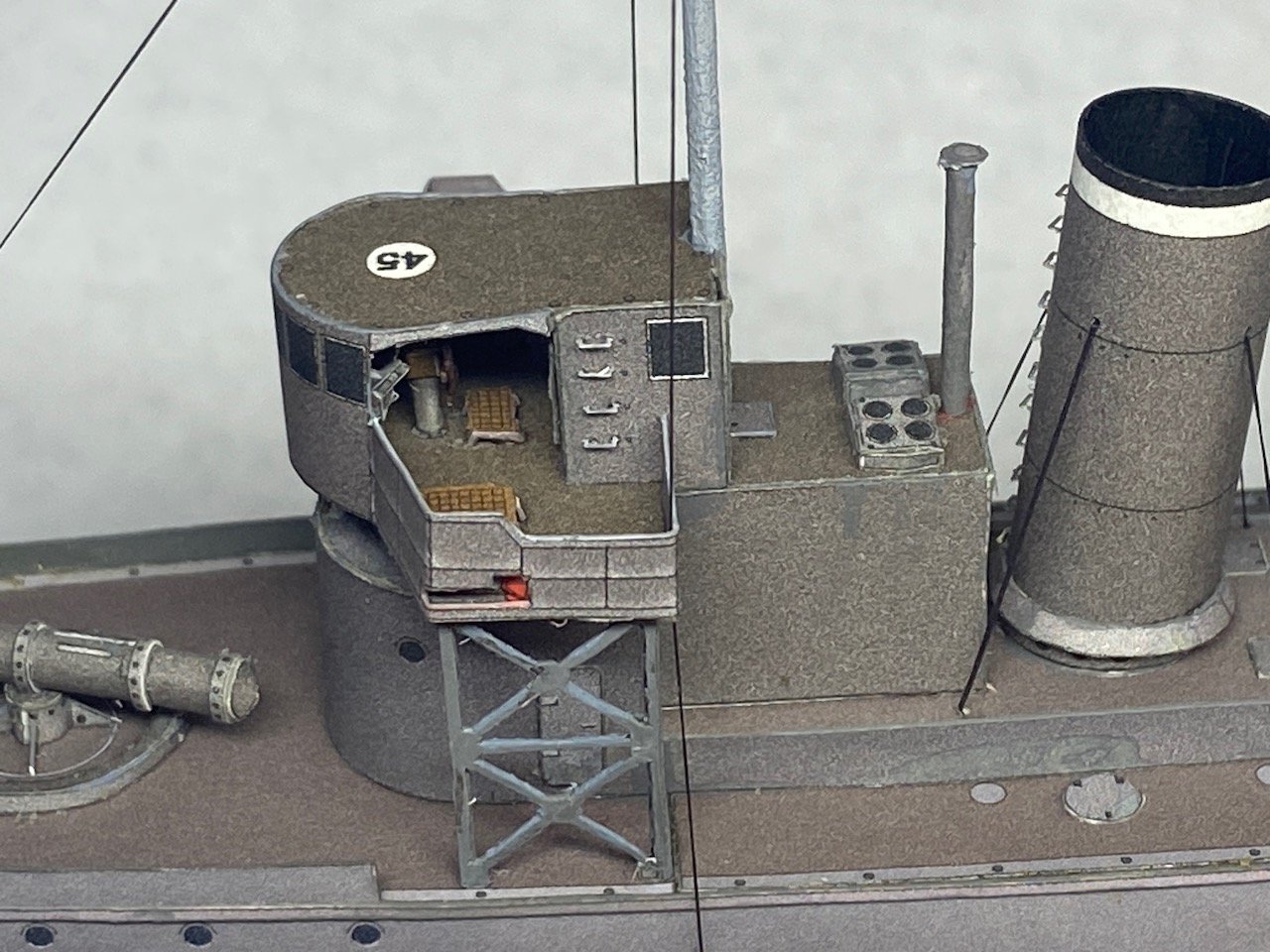-
Posts
1,877 -
Joined
-
Last visited
Content Type
Profiles
Forums
Gallery
Events
Everything posted by catopower
-
Hi ddp, thanks for those links, the pics should prove very helpful! Sorry for misspelling your screen name earlier. I realized today that it happened again because modern computing has apparently made things a little worse in many ways, including changing what I type because my computer think I misspelled something...😡
-
Julie, is there no end to the breadth and depth of your fascinating digressions??? 😀 I get what you're talking about, am somewhat familiar with about half of it, and completely understand maybe a quarter of it. But, it's always interesting, none the less! I also have been thinking about the Saginaw again, now that our ship modeling group is maturing (not just in terms of age of the members). I feel our group's local connections growing, including Mare Island connections, and I'm trying to stave off a sudden strong interest in modeling the 1891 monitor USS Monterey, after seeing the photo on the recent cover of the National Maritime Historic Park Association's Sea Letter magazine!
-
Hi Snug, was thinking about that possibility. I've seen some paper models where the lower hull seems to be devoid of seams, and I'm wondering if they did just as you mentioned. In my case, at least for this build, I think I'll stick with the kit's hull plates, with the filler providing the backing support.
-
Hi Cris, yes, that's what I was expecting, plates that butt up against one another, like they did with my V108 build. I prefer a full-hull model myself, except if I'm maybe doing a waterline diorama, which I have to try sometime. Anyway, I'm using the original kit parts now, and it looks like they'll work as expected. I'm now looking at either ordering paint markers for edging the red underwater hull, or I'll end up going back to what I originally did with the V108, which was to just carefully use paint. Big advantage of using the original parts is that there's no color distortion or detail loss that comes from scanning and then re-printing. As I mentioned before, the colors on the deck in particular are a bit muddy, and with the light shining just right, I can just read the number labels on the deck. That's not possible with the scanned and reprinted parts. Here's the kit part... And, here's the scanned and re-printed version... Honestly, even with the kit part, the numbers are so hard to see that I didn't even know there were any. However, I'll make it work. Anyway, I found the company had posted a jpeg on their Facebook page of this same parts sheet these came from, and the writing on it is nice and clear. And, yes, I thought about using that file, but it's only the one page, and I've had enough issues with sizing and color adjusting the printed output. So, I'm making due now with building the kit as it comes...
-
A bit of an update here. So, I took one of my early printed parts sheets to use to test fit parts on this hull I'm making (Printed parts sheets started as a scan of the kit parts pages, which I then printed out on my own printer). This turned out to be a very useful test, and gave me more confidence going forward. The most important thing this showed me, was first, to make sure to write the part number number on the back side of the part, AND to indicate which way the part is supposed to go on. In this case, I simply added an arrow to show the direction of the ship's bow. The next thing I discovered is that these hull "plates" extend over each the bulkheads. This means in order to use them, I'll have to trim them down or to overlap them. Neither solution seems ideal. Then, I got to thinking... I checked these pieces against the original parts sheets – I could do that now, since I had these parts cut out and could easily lay them on top of the originals. Sure enough, my printed parts are slightly oversized! Now, I could try to figure out what percentage I would need to reprint these at... Or, I could just use the original kit parts, and maybe see about getting a second kit in case I mess up a part, a strong possibility. I could also just figure on reprinting a parts sheet when and if I actually end up needing it. I suppose I could also hold off purchasing a spare kit until I actually need it. Then again, I don't know if that will be possible when the time comes, so I might just look into it now.
-
Snug Harbor Johnny, on digital downloads, I thought about asking Avangard about the possibility. It would certainly bypass any printing issues they have, cause by them being forced to use a less desirable paper. But, I really wanted the laser-cut frames and details sets, so I needed to place a physical product order anyway. I scanned their kit pages and did do some color adjustments, but only using the Preview app that comes native on Macs. The result is okay, but not as good as it would be if I could get the digital files from them. For now, I'm just going to use the product that they sell. If I do have any problems with it, it's likely going to be due to my inexperience/mistakes rather than their product.
-
Me too! I don't know if I'd do it again. It makes the hull pretty heavy. I've seen other using carved styrofoam or insulating foam, which I might try out in the future. I do however like to use wood reinforcement in specific areas, particularly where I expect to add mounting pins or screws. I did that with the V108, and I think it helped a lot when I went to mount it using brass rods. But, in that case, I'd used small basswood blocks, and they don't extend out to the surface of the hull, but are just for internal support. Chris, Johnny, I see what you're saying about perfectly filling out the hull. I was just never concerned with anything other than avoiding the distended ribcage look, and I don't think that'll be a problem now. The gaps I'm talking about in my hull, I don't expect to be a problem. But, perhaps you're right. I'll go over it one more time to get rid of what are kind of like 'nicks' in the spackle. My main concern now is that I've done a lot of sanding, and I'm concerned that this inner core of the ship will have shrunk too much. I was considering taking one of the reject sheets I printed out to test fit a few of the main hull parts to see if I've messed anything up yet. Also, the stern on this model is a bit funky. The aft most frame kind of hangs out, and I have no way to judge how the paper is supposed to create the proper curve without trying it out. This also affects the shape of the filler, which at this point, is shaped based on a "best guess".
-
Good news, I don't think I've ruined my model yet! I ended up using Gorilla brand wall repair spackling. The stuff is fairly soft and kind of fluffy going on, or 'in' as with the case of the framework of the paper model. Doesn't look very good right after applying the stuff... But, once dried, it was easy to sand it smooth, though I ended up having to re-apply it in a few spots. Eventually, got it as good as I think it needs to be. There are still a couple gaps, but that really doesn't matter. The filler is mostly to give the hull more strength, and to provide even out the framing, so that the exterior hull pieces will lay nicely. A few small gaps won't make a difference. I did notice that the deck had a slight bulging in areas. Probably, when I pushed the spackling into the framing, the pressure caused a little unevenness in the deck in a few spots. The result was also that there might have been a very slight apparent twist int the hull. I found I could actually sand the heavy cardstock deck, leveling out the bulges pretty well. I was surprised at how well the card took the sanding. Next step will be to start adding the hull pieces, starting with the lower hull. I already went back and re-printed my scanned parts one more time, this time in "normal" output quality (according to my computer's printer settings), rather than in "best" output quality. The result was print that wasn't quite so dark, and the gray part were slightly bluer, and maybe a little less muddy. Finally, I sprayed the printed sheets with some Winsor & Newton matte varnish to help seal the paper and to protect the ink. I don't know that it really needs it, but I've followed a number of paper model builds where something similar was used. No photos of this step, but I'll take more when I start adding the lower hull coverings.
-
So far, I've really enjoyed doing the easy part. Started making the structures for the subassemblies using the laser-cut frames set. Since most of the part labels were next to the parts themselves, I made sure to write the numbers on the faces of the parts, so I wouldn't screw things up... or at least reduce the chances of me screwing things up. I'm sure I can still do it... And, here are the substructure of many of the subassemblies. Meanwhile, I added some wooden blocks to help stiffen the hull framing. The larger filer blocks are balsa, but I started running out, so I just reinforced sections with some basswood pieces. This should also help to support mounting rods at a later stage. That's what I've done with other paper models, though they mostly been a lot smaller than this one. I'm going to experiment with using some filler to fill and smooth out the hull shape. I've seen some models where the builder used styrofoam instead of the wood blocks or filler. Just never been keen working with that stuff. Worst case with my model hull, I'll ruin it and I'll need another laser-cut frame set. Anyway, I'm considering getting a second kit, because I know I'm going to lose or mess up parts. I've scanned and printed the parts sheets, but the color is off from the original, and the color and part numbers printed on the deck pieces are pretty muddy in the original and hard to read, and even worse in the printed scan.
-
Thanks Chris, I think that's basically what the Avangard instructions are showing. What's a little confusing is that it's hard to tell the placement of the assemblies. There's no master diagram that shows all the structures in place (with numbers), and It's difficult to see any numbers on the printed decks, but I can tell they're there. I'm sure I'll figure it out, but it's a bit confusing at first. I guess that's one reason they call this an "advanced" kit...
-
These steel navy ships in paper are interesting. I'm used to building sailing ships, but with these steel vessels, there seem to be a lot more sub-assemblies. Construction seems to be, at least looking at is all at this stage, less linear. For the most part, it seems I could work on the various superstructures off the model. Then, when they're all done, just glue them to the deck. I have a lot to learn about these builds, and experienced builders clearly have developed techniques to make their models superior. I suppose that's true about any type of modeling. I'm clearly a newbie here, so I'll just learn what I can and do my best.
-
Having just finished my first steel navy paper model, the German WWI torpedo boat V108, it seems appropriate to start a blog on this new paper model project, USS Bagley on Pearl Harbor Day. I say appropriate, because the destroyer Bagley operated in the Pacific and was moored at Pearl Harbor on the day of the Japanese attack. Bagley's crew manned her .50cal machine guns and claimed to down a number of Japanese aircraft, though this couldn't be substantiated with all the anti-aircraft gunfire taking place. By mid-morning, she headed up the channel and out to the open sea under the command of a junior officer, as her captain, XO, and gunnery officer were still ashore at the time. The ship was the lead ship of her class, built in 1937, as a "Treaty Era" destroyer, which limited her displacement to 1500 tons. She had an active wartime career and earned 12 battle stars. The ship survived the war and was decommissioned in 1946. The Kit This kit is published by the Ukrainian company Avangard, and depicts the ship in her 1944 configuration, with camouflage. She was armed at this time with 4x 5"/38cal guns in single-gun turrets, 6x 20mm anti-aircraft mounts, a twin 40mm mount, 16x 21" torpedo tubes in four quad mounts, and 2x depth charge racks. Some of the printing, particularly of the decks, seems to be a bit too dark, and it’s hard to distinguish some of the printed details. I suspect I might end up having a hard time placing some of the parts because of how dark things look. I contacted the publisher about this, as I didn’t know if this was normal. As it turns out, due to the war in Ukraine, the company has been limited on available paper supplies, and the paper they have been able to get doesn’t absorb the ink the way that they would like. This may be too much of an issue for some. But, I think I will be able to manage. It will help that there is a jpeg image of this sheet posted on the company’s Facebook page, with the printed part numbers appearing more clearly. One thing that threw me, which had to be explained to me by someone at Avangard, is that there is one page that is clearly out of place. It’s a second page for the lower hull of a ship, but it’s different than the Bagley’s hull, and even has a label that says IJN Asashio. Apparently, this is not a mistake. There was a measurement error in the earlier Asashio kit, and there was extra space in the Bagley kit, so the publisher just stuck in the revised sheet. I’m just glad it wasn’t a error in my kit. The kit has almost no text, except the ship history. But, what text there is, is in English. The drawings seem clear enough. Of course, only an actual build will determine if there are any construction issues with the kit. Along with the basic kit, I ordered the laser-cut frames set as well as the details set, which is basically all of the railings, ladders, and other fine parts. All told, I think I spent less than $60 for the kit and accessories sets. I had a very hard time purchasing this kit, but no fault of the publisher. Living in the US, I discovered that it’s almost impossible to get any paper model products from Europe. I tried to buy this kit from Fentens (Germany), GPM, and Orlik, but none would ship to the USA due to tariff and customs issues. I only got lucky when I contacted Avangard directly about my situation, and they were able to help me out on a one-time basis and get this kit and accessories sets to me directly. Many thanks to Avangard for their help! Instructions and Parts I don't really have much experience with most paper models, except Shipyard kits, which are kind of their own animal I think the Avangard kits are pretty typical in terms of instructions and parts. There is no written instruction at all, only diagrams are provided. Interestingly enough, the only text is on the inside front cover and back cover, which are only written in English. Building Begins... The beginning stages of construction of paper models, seem pretty straight forward. These parts are from the laser-cut frames set. At 1/200 scale, this is a pretty good side hull, just about 20-1/2" long. I'm not sure if I did this the way I should have, gluing the upper and lower hulls together at this stage. But, it's all a learning process. Don't know how much time I'll spend on this model, so it may be a slow build, but construction has begun...
-
Thanks, GrandpaPhil! I had a lot of fun with the build – Certainly learned a thing or two!
- 106 replies
-
- digital navy
- v108
-
(and 3 more)
Tagged with:
-
I'm happy to say that I finally put the finishing touches on my V108 model today. My first steel navy paper model is complete. It's not perfect, but I'm pretty happy with how well it turned out. I ended up not detailing the radio aerials as much as I had originally planned. But, between the existing aerials and the photo-etched railings, I think I had enough of a challenge to satisfy me. Today, I finally got around to adding the anchors and cutting out and building a new anchor crane and mounting it into place. I'm much happier with the new one that with my original one. Also, since my last post, I added the new ladder that leads up to the bridge. Again, it's not perfect, but it actually turned out much better than I thought it would. The other item I added was the rangefinder that's mounted up in the little tower, just aft of the aft torpedo launcher. That particular item turned out to be a real challenge to make. I couldn't built it the way the instructions showed, but it's very small, so it's hard to see the details anyway. So now I can move onto the next steel navy paper model project. But, I have so many other things I need to finish. I'll probably go ahead and start that project, so I can see if I can improve my paper ship modeling techniques, but I will probably only work on it in between other projects. Anyway, it's nice to have this one moved into my list of FINISHED models. Next year, I'll probably take it to a couple local IPMS events.
- 106 replies
-
- digital navy
- v108
-
(and 3 more)
Tagged with:
-
Sorry to hear about the contact troubles – You should have absolutely gotten an email reply. I just checked the number and the calls are getting through. As GrandpaPhil pointed out, unfortunately, yes the accounts couldn't be transferred over. If you can PM me your email address, I can check with the staff to ask them why you aren't getting replied to. That's not good!
-
Or, perhaps, it's beginning of the middle? 😁 No pics this time, but the ladder is done, I think... the steps aren't as even as I would like. It's hard to line them up as marked on the paper. The anchors look better, and I just need to add the stocks, which will be wire. Also, I'm almost done with the rangefinder – that's a tough assembly(!), not to be viewed too closely. 😕 With luck, my next post will be my last on this... soon!
- 106 replies
-
- digital navy
- v108
-
(and 3 more)
Tagged with:
-
Tiny bits of progress. That's what this paper model project is down to. I did manage to finish the remaining pieces of photo-etch railings. These were the harder pieces I decided to save for last. There were two pieces remaining. The first was to finish the curved rail at the stern. It took a little doing to create the correct curve, and to cut the railing to the correct size. The ends of this piece had to be cut, so that I ended up with three "free floating" rails that just slightly overlap the existing, mounted rails. This worked pretty well, though it took me a while to glue the piece into place, as I couldn't fully achieve the right curvature, and had to get the glue to hold it in place and to hold the right curve. I think this turned out pretty well, as it's difficult to see where the rails are "spliced" together. The hardest piece to add was the one on the forecastle, just abaft the gun mount. This required a double-curve which took me quite a bit of work to get close to the proper shape. To help out, I cut an extra forecastle deck piece so I could work out the curvature off the model. Again, I got the rail curvature close, but not quite. It was close enough to allow me to cut the ends, again with the three free-floating rails sticking out. Once the curve was close enough, I glued it down on the model, holding it into place with tiny scraps of wood, coaxing the piece into position with the right curve. The ends were glued to the vertical "stanchions" of the existing railing, being careful to get the rails to line up as closely as possible. After the glue dried, I carefully snipped off the excess. Again, it seemed to turn out pretty well. It's not perfect, but at this scale, except until zoomed photos, it's hard to see any issues. Lastly, as you can see in the above photo, I finished assembling the searchlight, and mounted it on top of the bridge. Just a few things left to do on the model now. I have to assemble and add the anchors and a new anchor crane. I still haven't added a ladder that leads up to the bridge, and then I have a couple more radio aerials to add. Oh, and then I have to add the rangefinder on top of the little platform just fowards of the aft mast. THAT piece, is going to be a challenge... Still, completion shouldn't be long now!
- 106 replies
-
- digital navy
- v108
-
(and 3 more)
Tagged with:
-
Hi GrandpaPhil, Taking on another build, and a big one too! Your Speeljacht turned out really nicely. Will be interesting to see how this works out as an enlarged scale model, very daring of you! I've been thinking about doing this myself with one of the Shipyard frigate kits, but only to take it from 1/96 scale to 1/72 scale. Looking forward to watching your progress!
- 4 replies
-
- card
- De Zeven Provincien
-
(and 1 more)
Tagged with:
-

Anyone out there working on a card model?
catopower replied to gagliano1770's topic in Card and Paper Models
I got a bit bogged down on the PE parts for the V108, but I'm oh-so-close to finishing the model. I just needed to step away for a bit, so I figured "what the heck" and started the hull of the USS Bagley. I may be in over my head with this kit, as there is so much that I don't know about. Like with the brass photo etching, progress may be periodically stuck, So, in terms of paper ship models, I expect I'll turn my attention back to Shipyard kits and modeling wooden-hulled sailing vessels. But, this is fun to play around with. I haven't started a build log here yet, though I did on the papermodelers.com site here. I have a feeling though that I'm in over my head on this one! -
A few weeks ago, I paused on this model, and started working on rigging a friend's ship model, as a shoulder problem and shaky hands have prevented him from working on his model for the last few years. I'd done quite a bit, but there's a lot more work required on the his model. So, I decided to see if I could make some progress on the V108 again this week and work towards completion. I've gotten just about as far as I plan to with the the bulk of V108's rigging. This week, I secured the guy wires or stays of the aft mast, then started the process of adding photo-etched railings to the model. This is something I've never done before, and it's proved to be a bit of a challenge, but I'm making progress. The hardest area, so far, is the first that I took on, the top of the bridge. This took a lot of shaping, cutting, and gluing together of the railing pieces, but I think I managed okay. Once that was in place, I decided to pause to finish adding the propeller guard supports. These, I cut from steel wire, I don't recall what gauge. After that, I added the railing to the forward part of the main deck. This is partly hidden by the raised bulwarks, but that seemed to make it pretty easy to add the railings and to secure them pretty well. The railing aft of the bridge support structure was simple enough in that I used a full length piece of railing. I mean to start the railing closer to the bridge support structure, but ended up with a larger gap than I'd planned on. I suppose I could rip up the railing and redo it, but I'm afraid I'll do more harm than good. So, I'm just leaving it alone for now. Putting the long railing pieces into place turned out to be more difficult than I expected. I found it a challenge to keep the railings sitting vertical, they tend to lean a little bit inward or outward. Also, I'm using Aleene's Tacky Glue. It seems to work pretty well, but as I keep playing with the part to get it to sit correctly, I'm kind of whipping up the glue, so it's not as transparent or as smooth as it should be. I'll need to look at this again and see what I can do to clean it up a bit. After that, I'll add a final piece that fits the curve of the stern and connects up with these other pieces. Then, I can look at mounting railings on the forecastle, which has a curved slope to the sides, so I'm expecting that are to be a little tricky. Below, you can see how wavy the railing is, still. I'll be seeing if I can do anything to minimize that waviness. I need to consult with my plastic ship modeler friends about this. Note that the insides of the funnels show the pieces of the guy wires and some ladder rungs poking through. I decided to use a little bit of dyed cotton stuff down inside, like smoke from the boilers. Anyway, the light at the end of the tunnel is looking quite strong now...
- 106 replies
-
- digital navy
- v108
-
(and 3 more)
Tagged with:
-
I've never met him, but I've been connected with the SMA off and on over the years, and his name came up often enough for me to recognize it. I'm sure I've seen his work in their newsletter. I'm very sorry to hear of his passing.
-

Review Le Cerf - Dusek - 1:72nd Scale French Cutter
catopower replied to brunnels's topic in REVIEWS: Model kits
Nice review, brunnels! I've considered this kit many times. I actually like that it's 1/72 scale, as I have many other projects in that scale as well. I think the main thing holding me back has always been that I have the Ancre monograph and I always thought I'd scratch build the ship, so I never followed up on buying the kit. But, I still like this one a lot, as it has an American history connection. -
Hi Julie, I've never heard the term header board. I know these as trailboards. As far as I know, they are just wood, and usually have a slight upward curve to them, so I don't think they were interchangeable. I'm guessing that in some shipyards, there's one person who regularly carves these things. So, among the lumber schooners, many of them may very well look the same, or at least very similar.
-
While I'm working on building the searchlight, rangefinder, and a new anchor crane, I added the remaining bridge detail, which included the navigation lights and the wooden grating platforms. I also decided to go ahead and rig the ariels on the masts and mount the masts into place. This work might get a little bit in the way when dealing with the railings, but I just felt that I needed to move the project forward a little more. Also, those radio ariels that run down to the bridge wings in the above photo is not glued into place, it's just an extra long, weighted line that runs through a pinhole I drilled into the bridge deck. So, I can move those out of the way to add the top most railing. The aft mast stays needed a place to secure on deck, so I just drilled pinholes for those. For now, I weighted the stays with binder clips in about the location where they'll need to go. As for the ariels I ran between the masts, that's just "un-educated" guesswork, as this part of the instructions didn't seem detailed enough. I'm happy enough with for this model Next, I'll need to secure the aft mast stays before I start adding the main deck railings. Oh, forgot that I still need to add the supports that run up from the propeller guards to the hull. That shouldn't be too difficult, and I'll probably do them next.
- 106 replies
-
- digital navy
- v108
-
(and 3 more)
Tagged with:
About us
Modelshipworld - Advancing Ship Modeling through Research
SSL Secured
Your security is important for us so this Website is SSL-Secured
NRG Mailing Address
Nautical Research Guild
237 South Lincoln Street
Westmont IL, 60559-1917
Model Ship World ® and the MSW logo are Registered Trademarks, and belong to the Nautical Research Guild (United States Patent and Trademark Office: No. 6,929,264 & No. 6,929,274, registered Dec. 20, 2022)
Helpful Links
About the NRG
If you enjoy building ship models that are historically accurate as well as beautiful, then The Nautical Research Guild (NRG) is just right for you.
The Guild is a non-profit educational organization whose mission is to “Advance Ship Modeling Through Research”. We provide support to our members in their efforts to raise the quality of their model ships.
The Nautical Research Guild has published our world-renowned quarterly magazine, The Nautical Research Journal, since 1955. The pages of the Journal are full of articles by accomplished ship modelers who show you how they create those exquisite details on their models, and by maritime historians who show you the correct details to build. The Journal is available in both print and digital editions. Go to the NRG web site (www.thenrg.org) to download a complimentary digital copy of the Journal. The NRG also publishes plan sets, books and compilations of back issues of the Journal and the former Ships in Scale and Model Ship Builder magazines.

